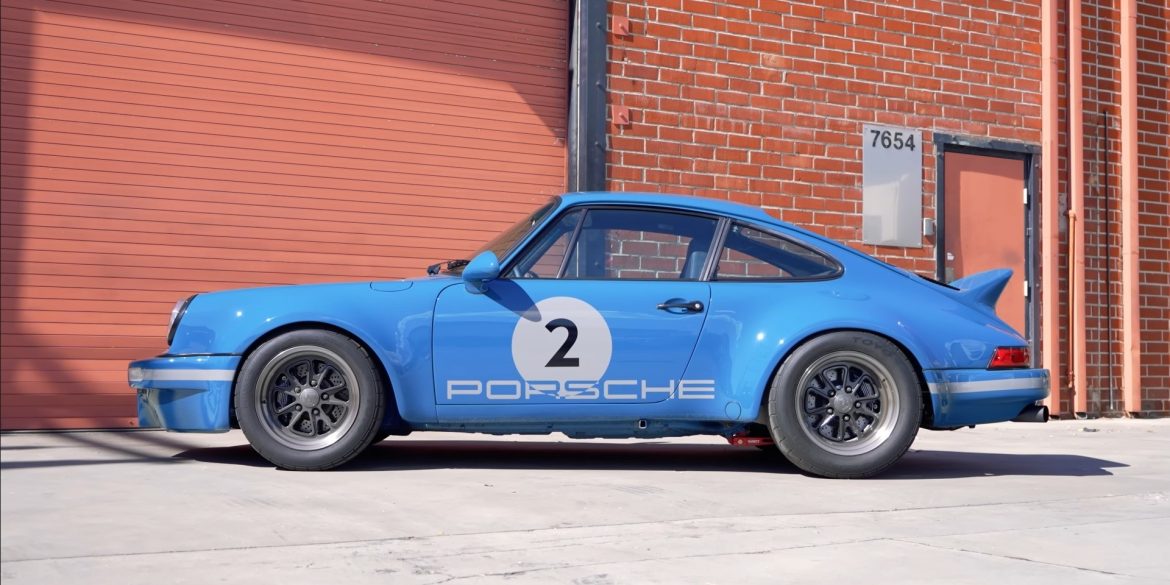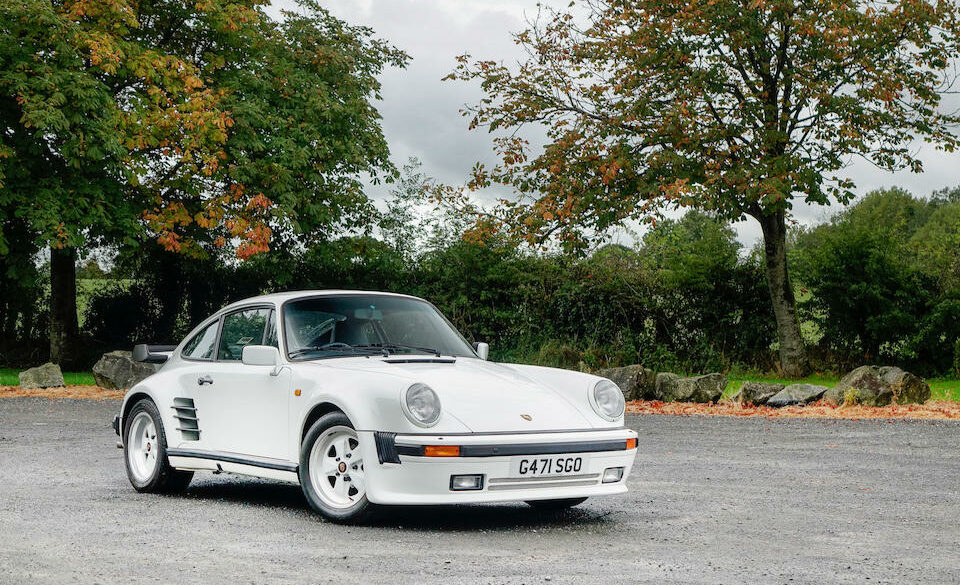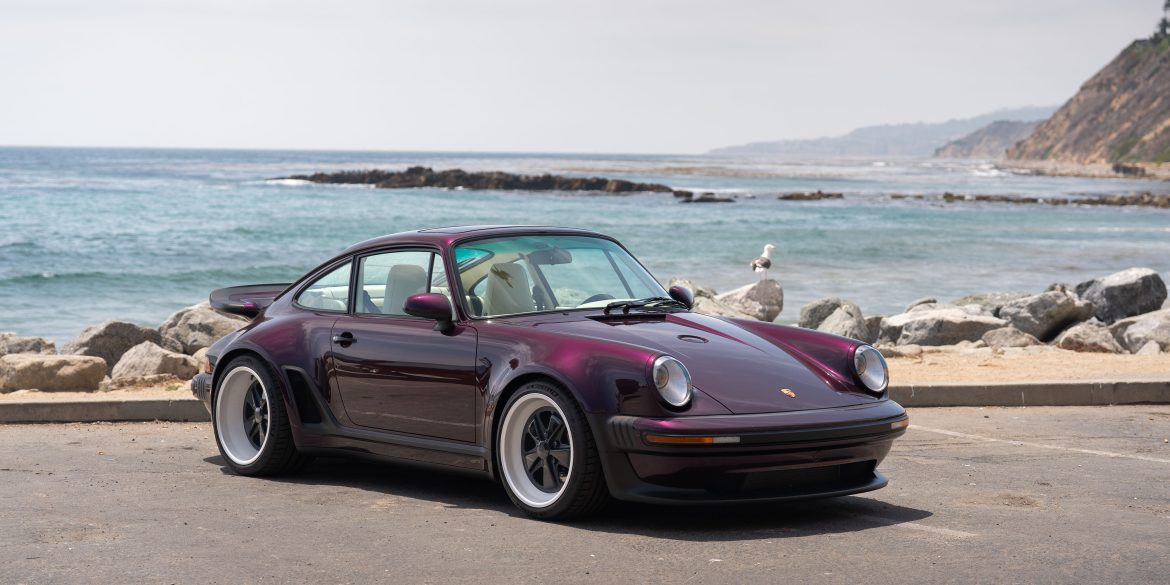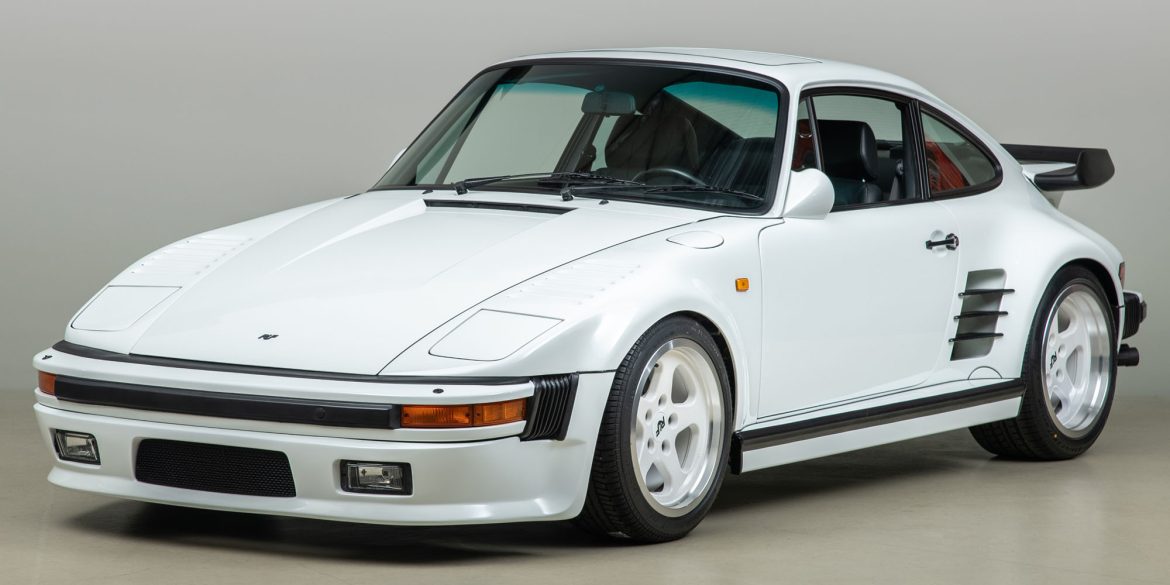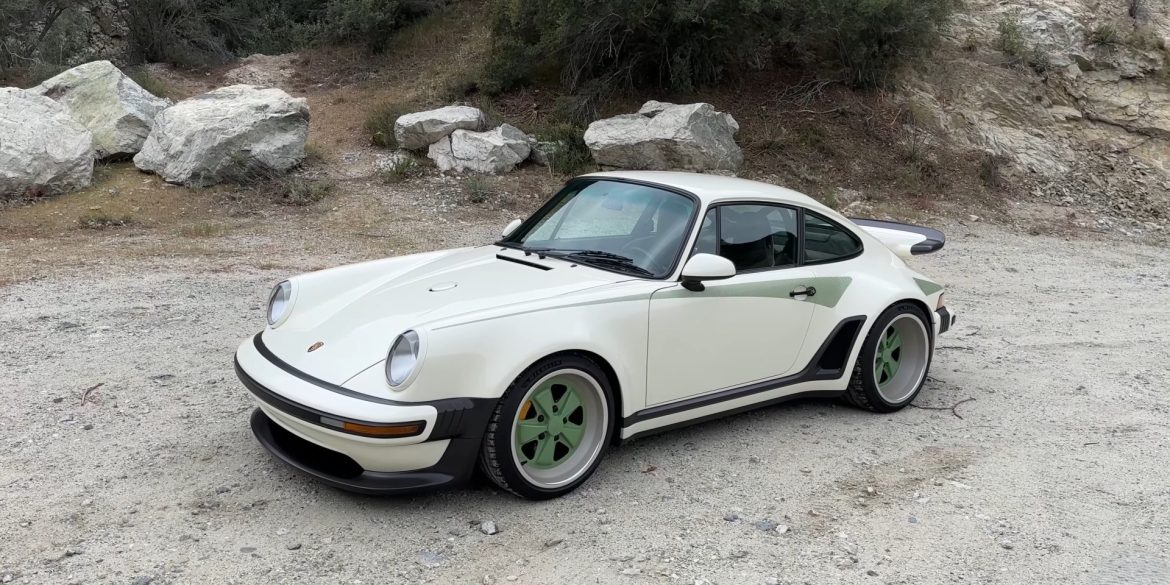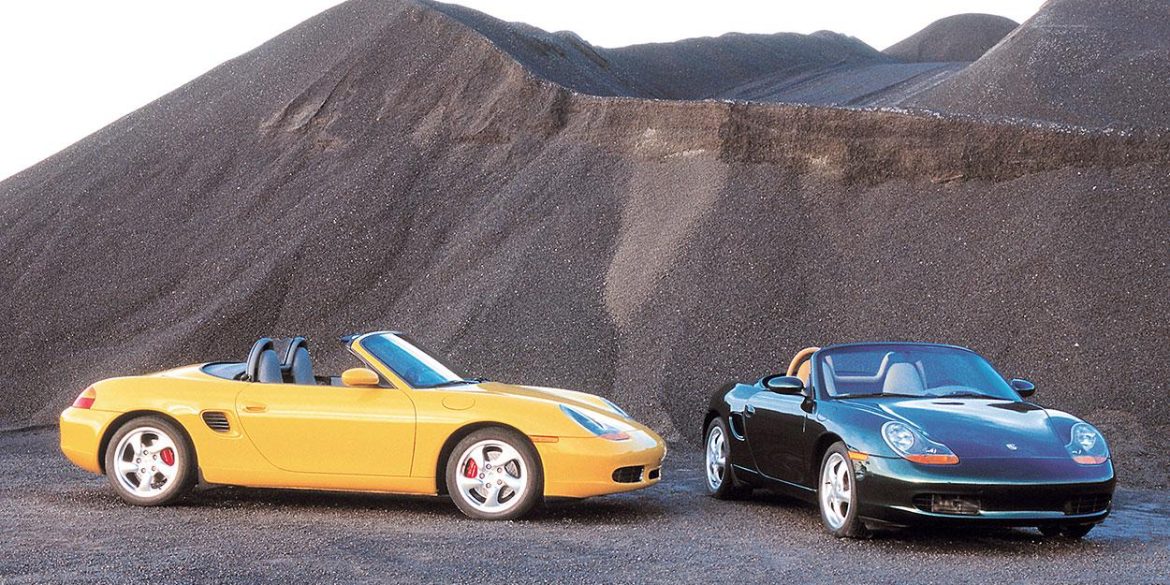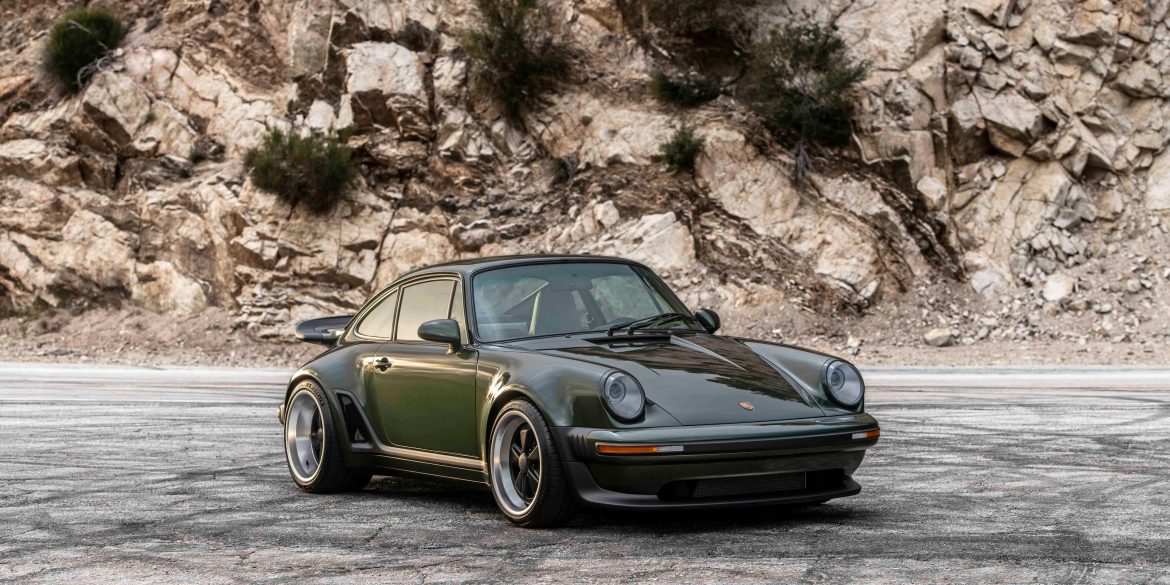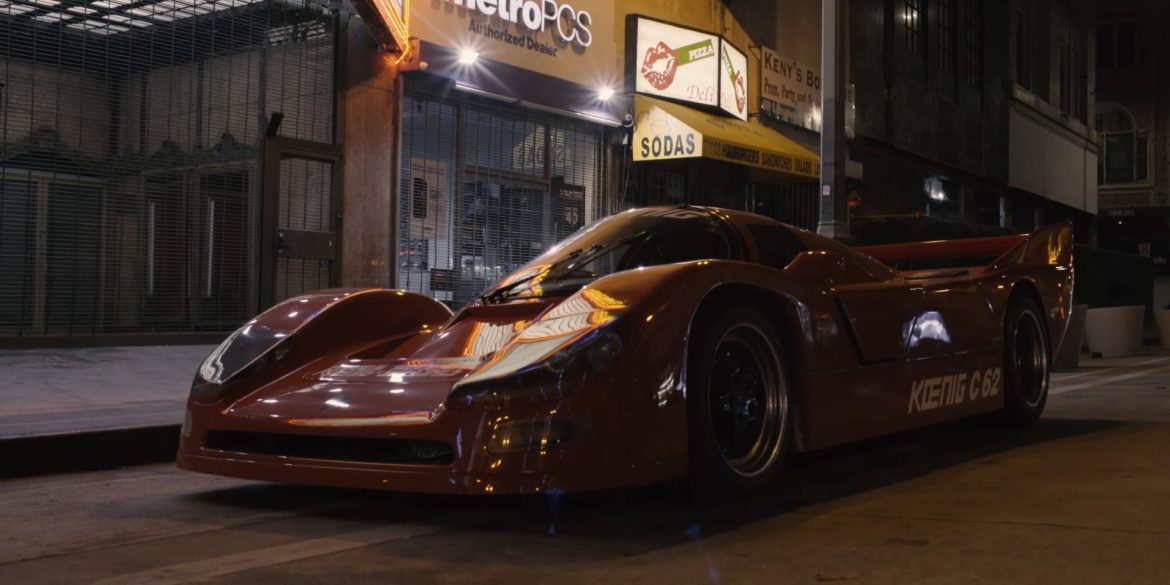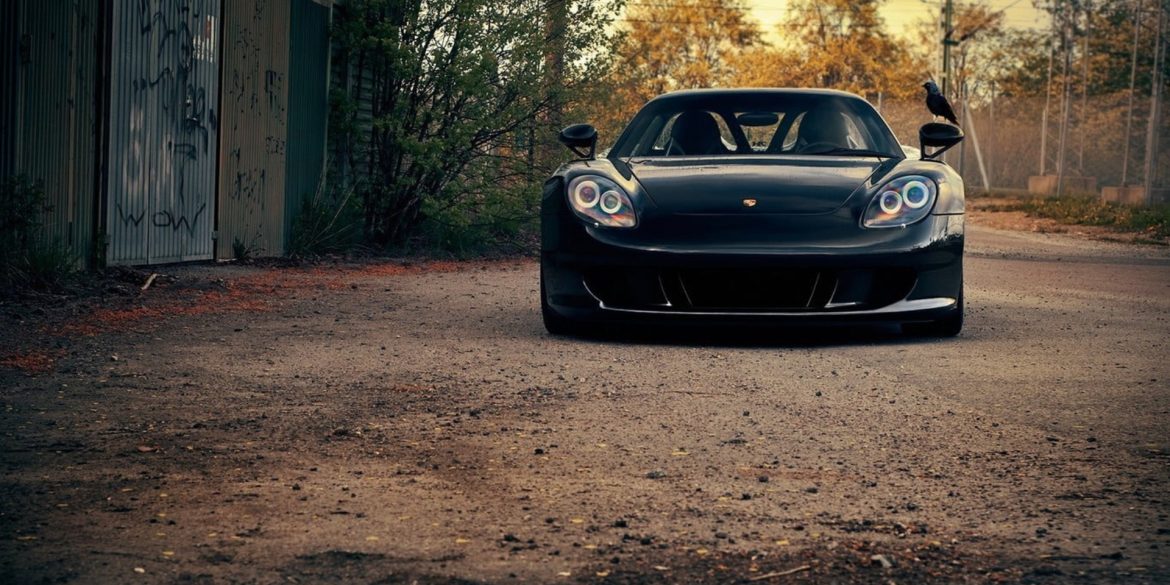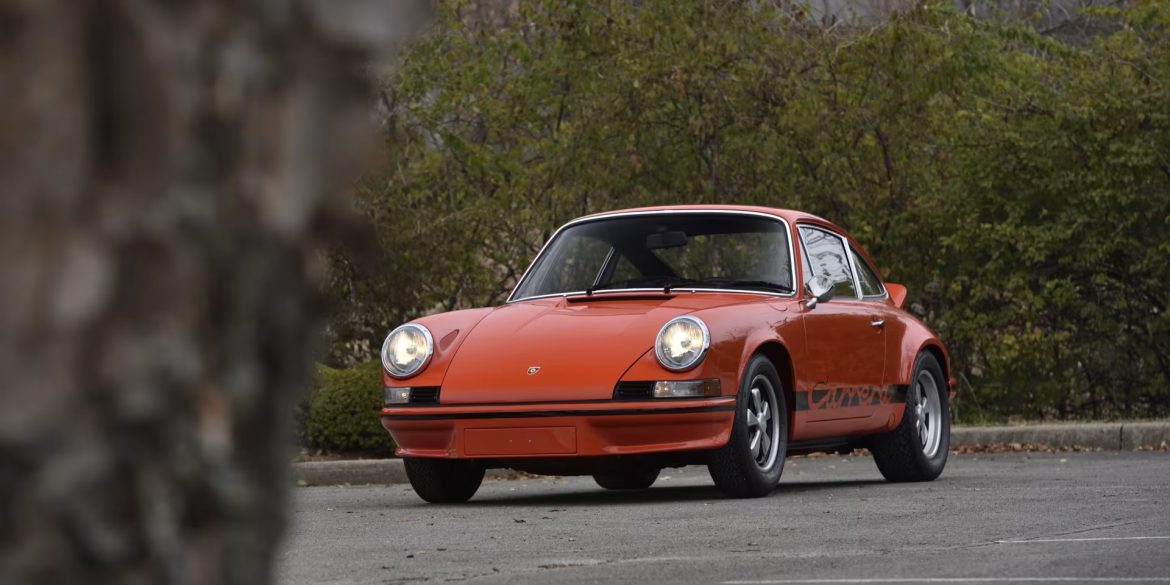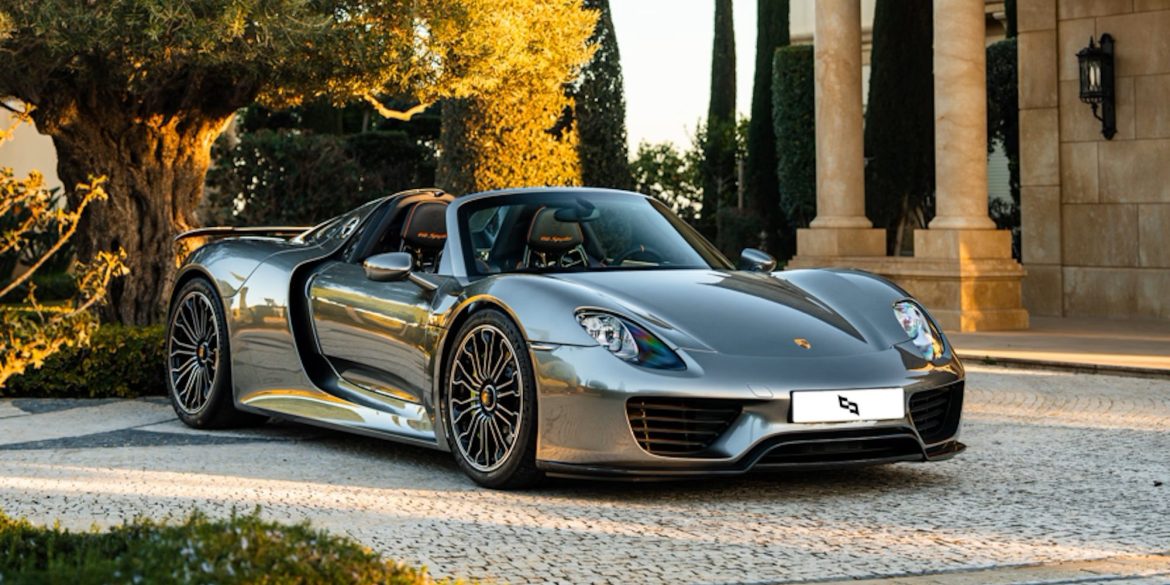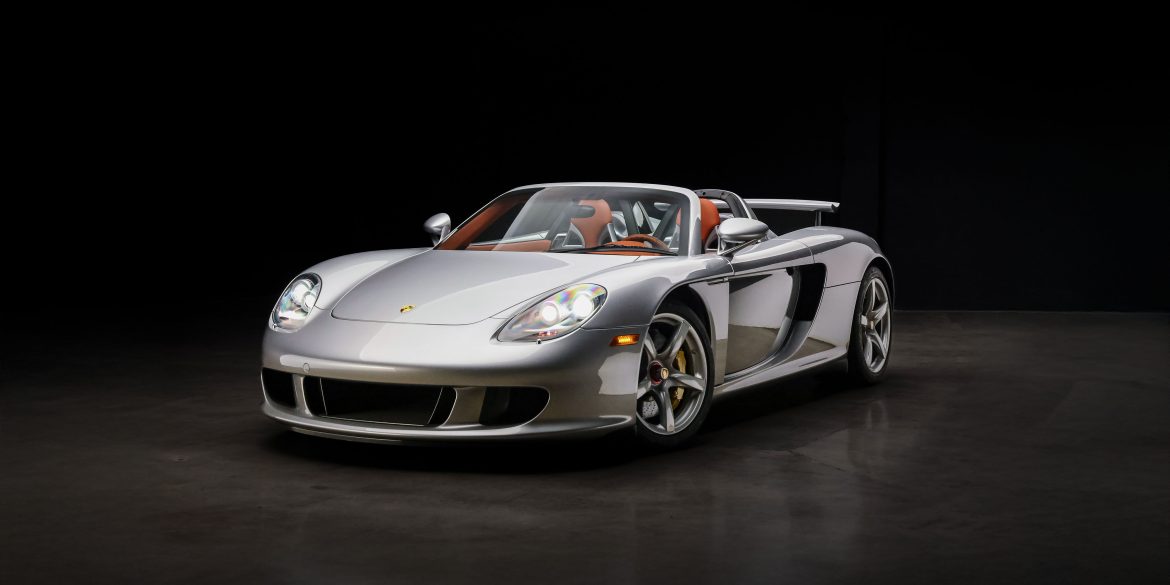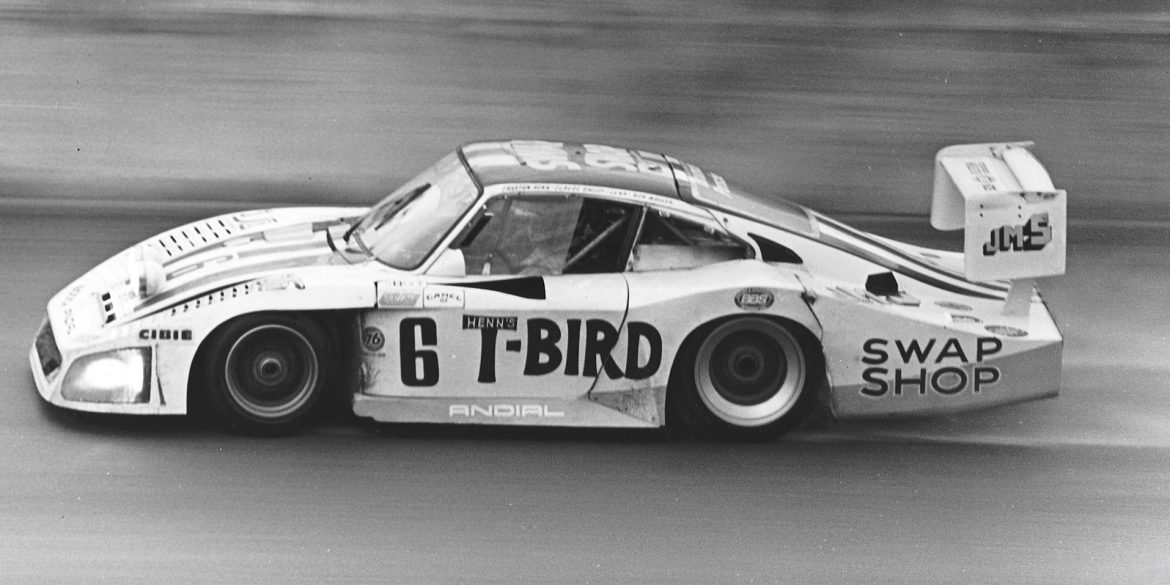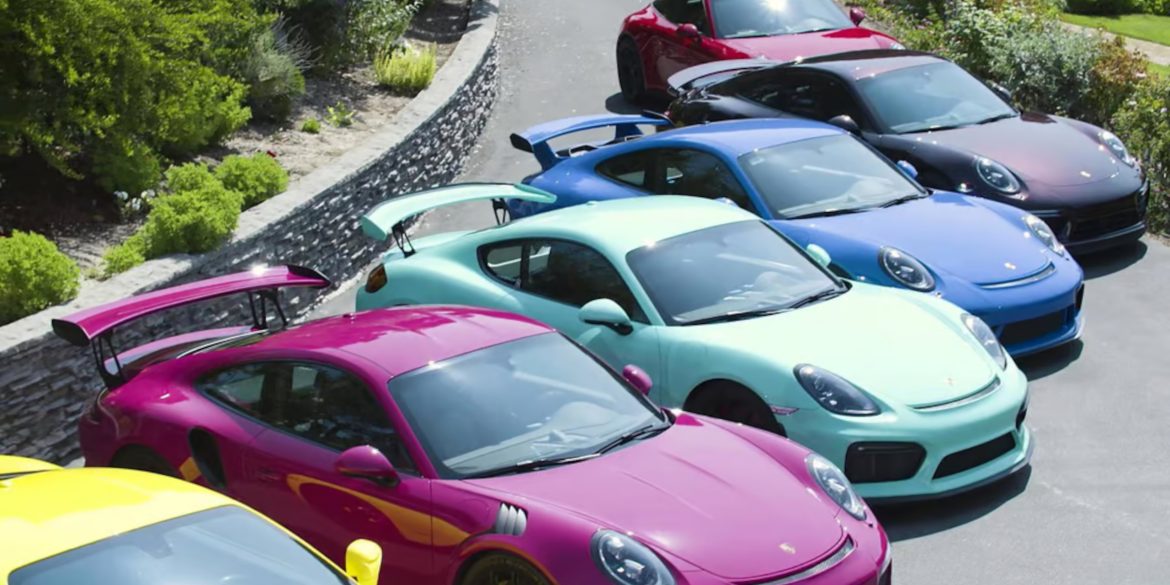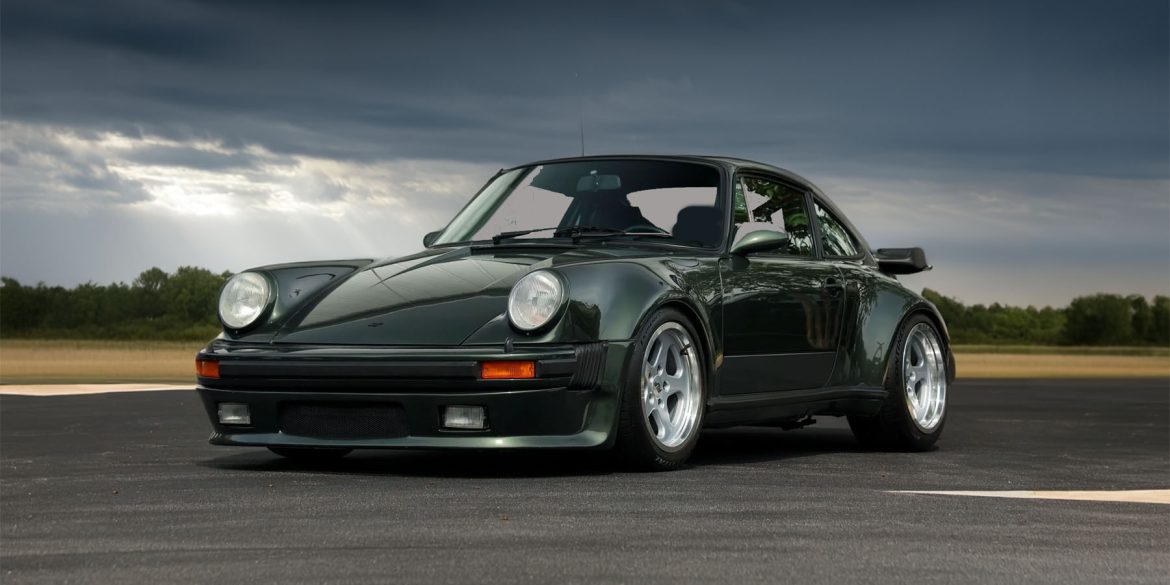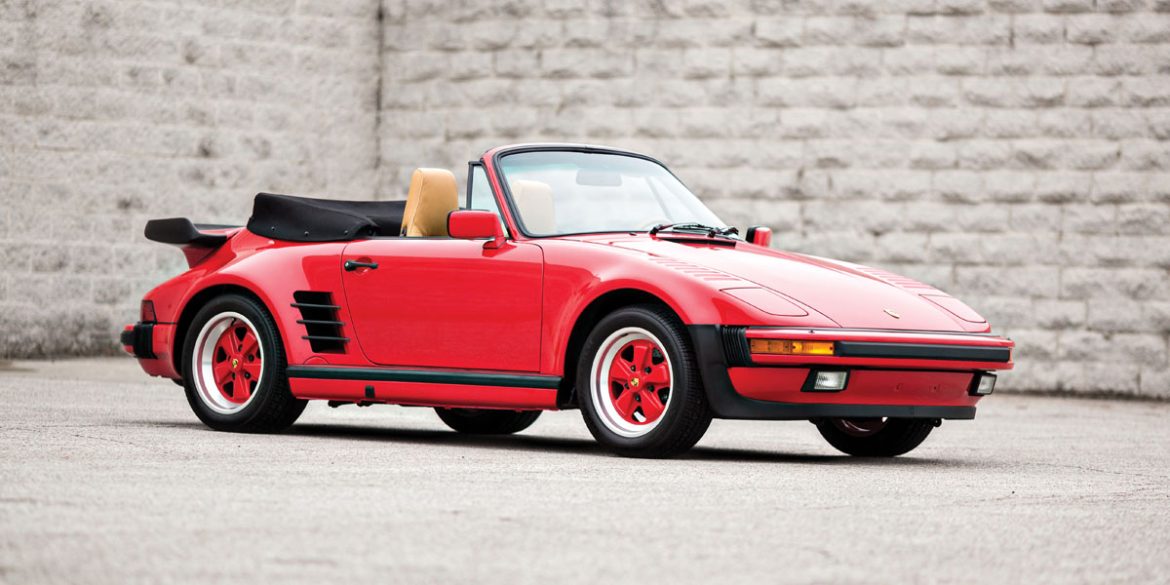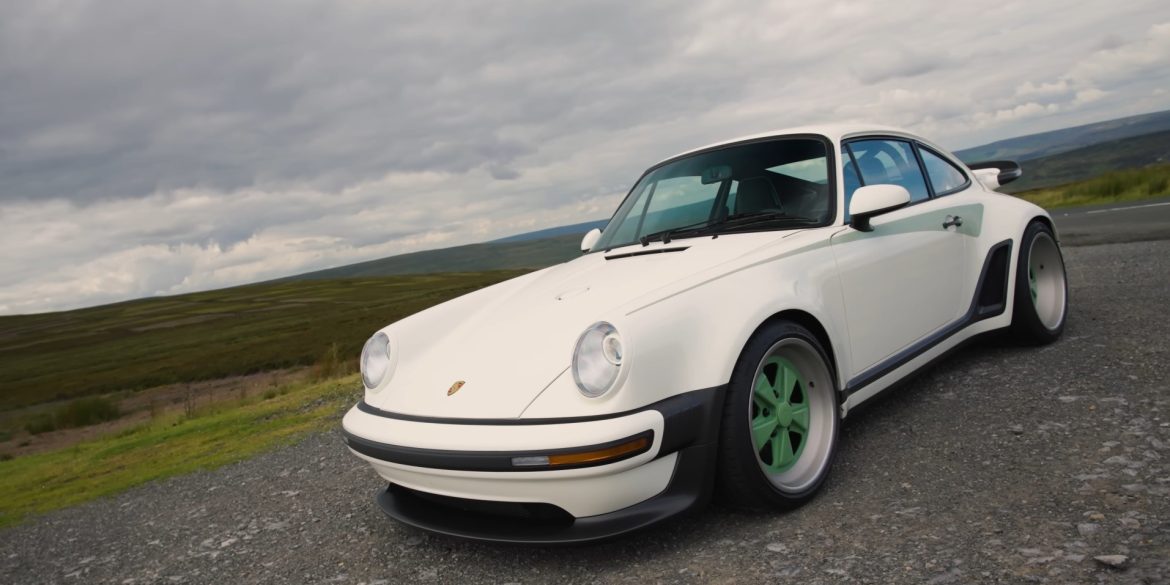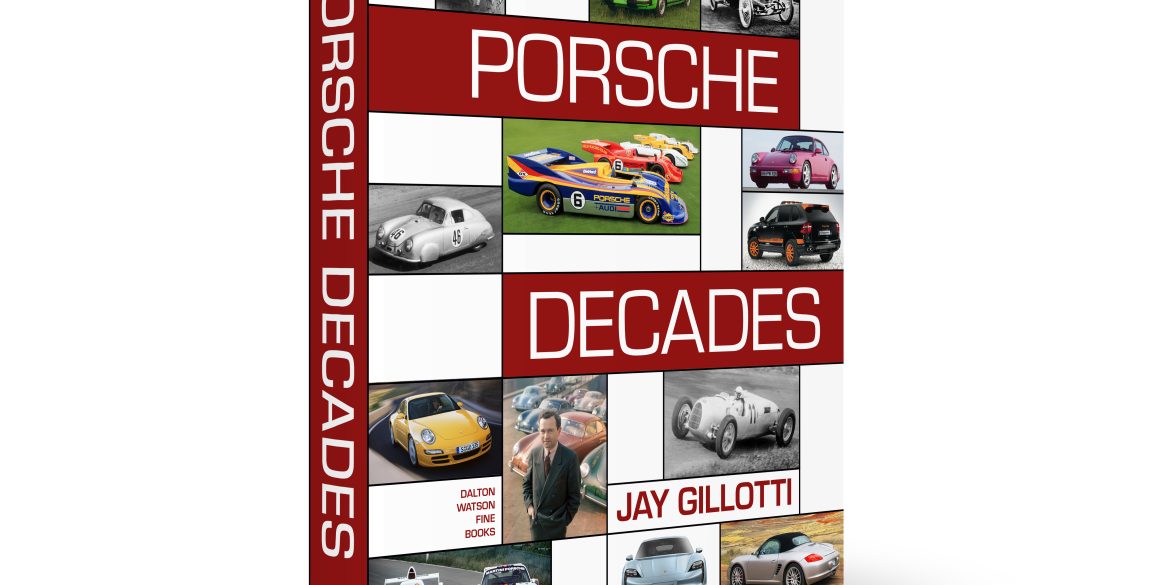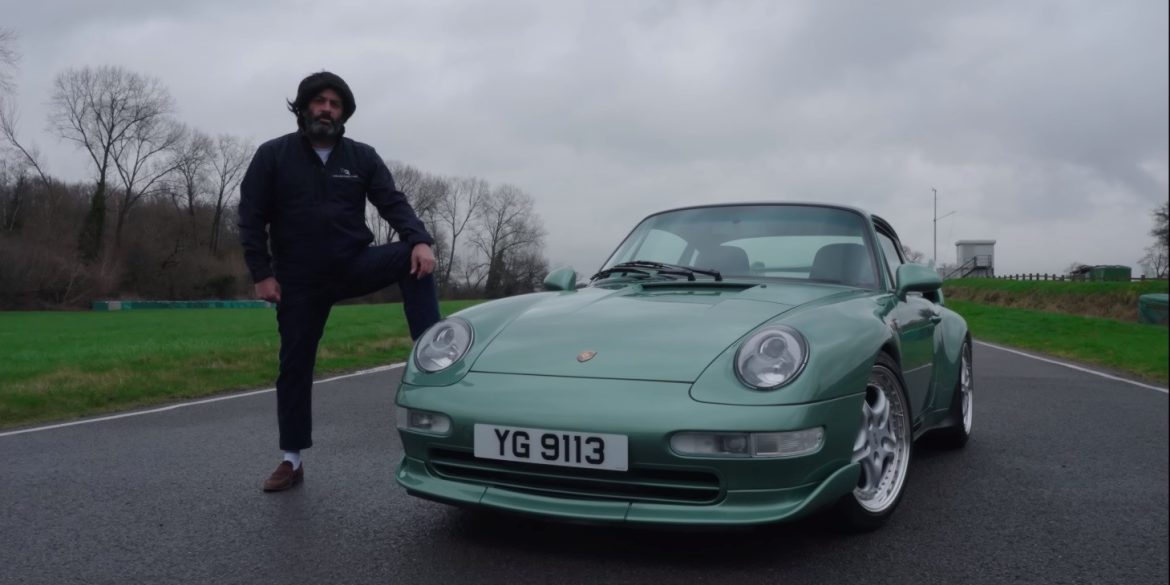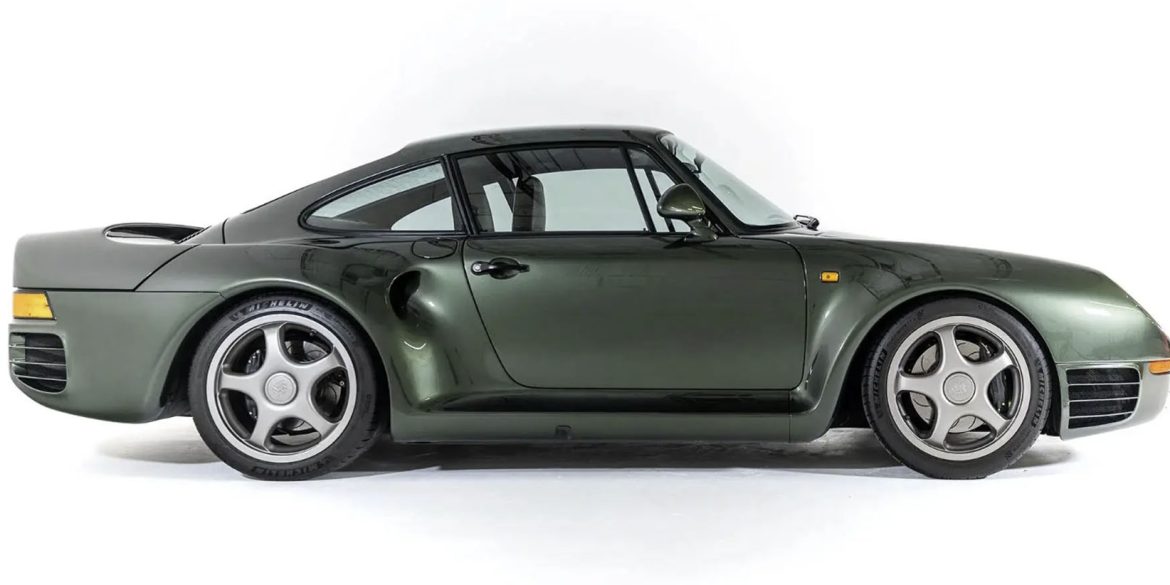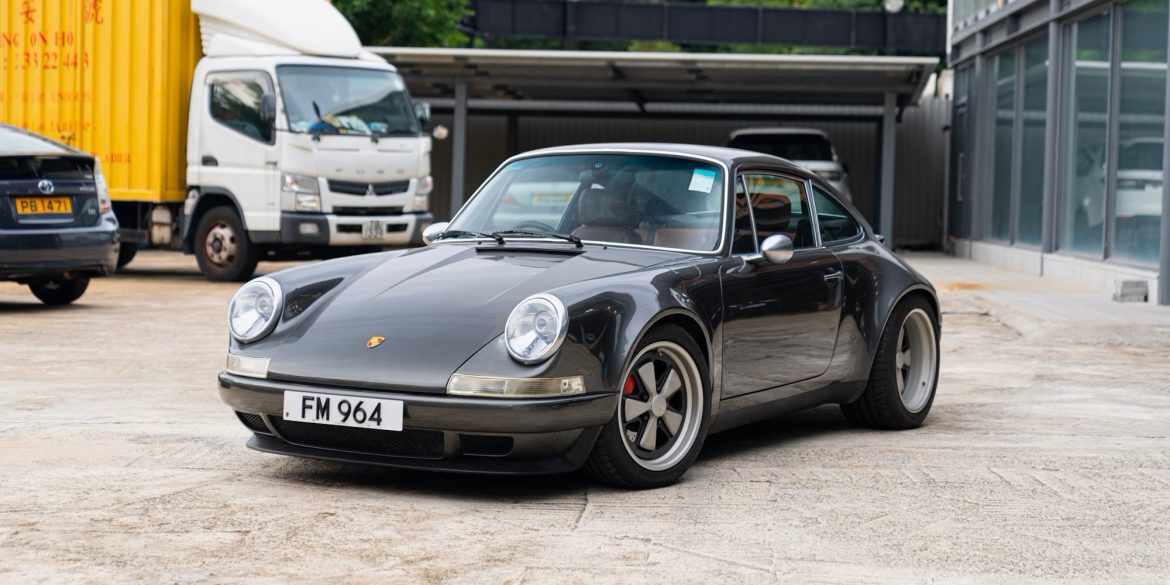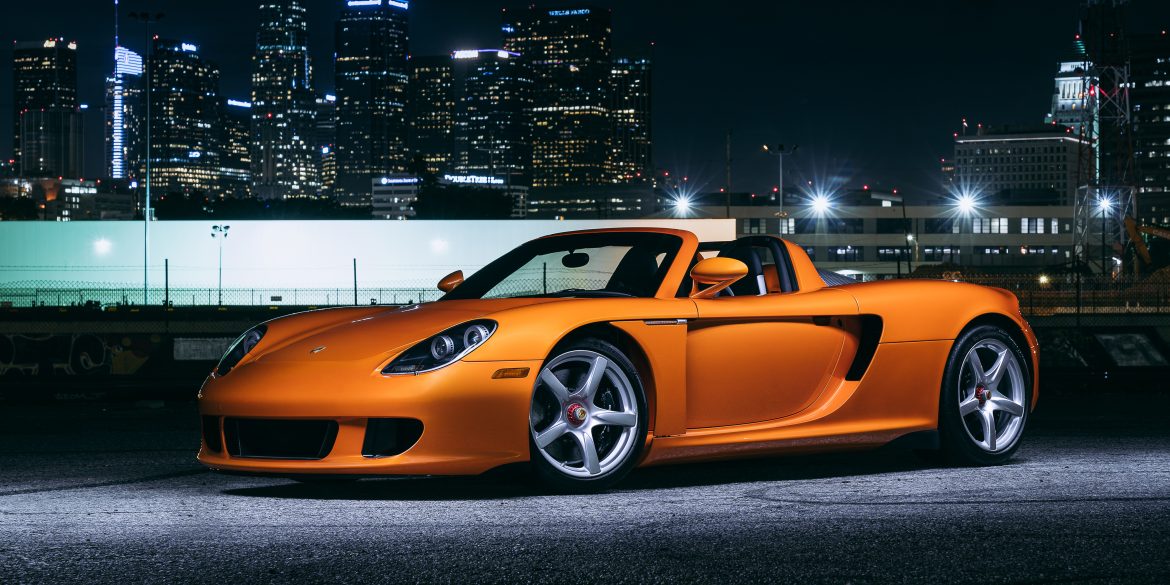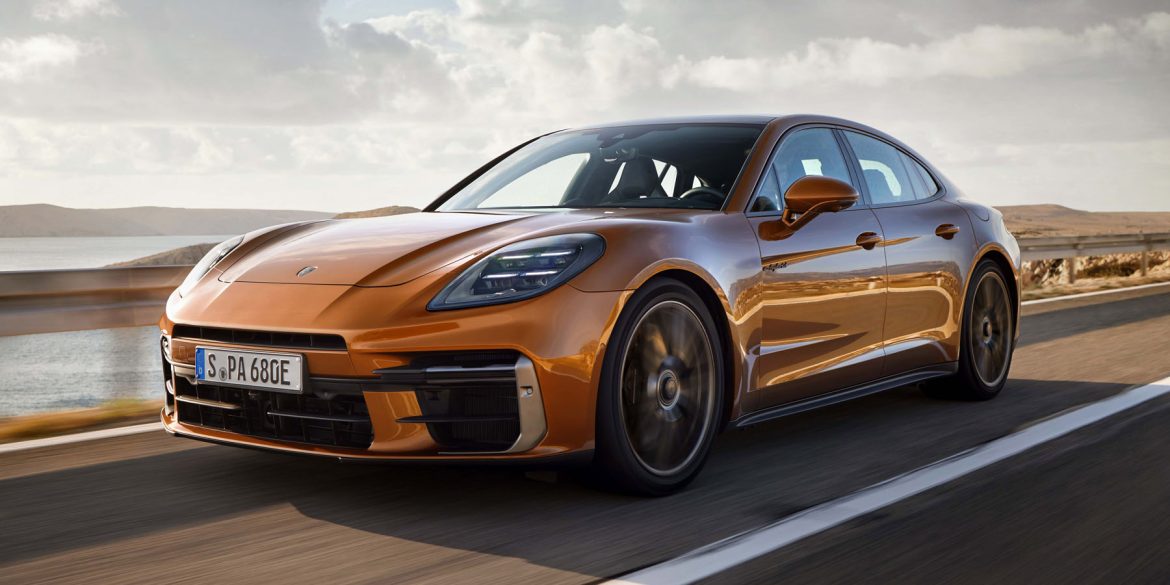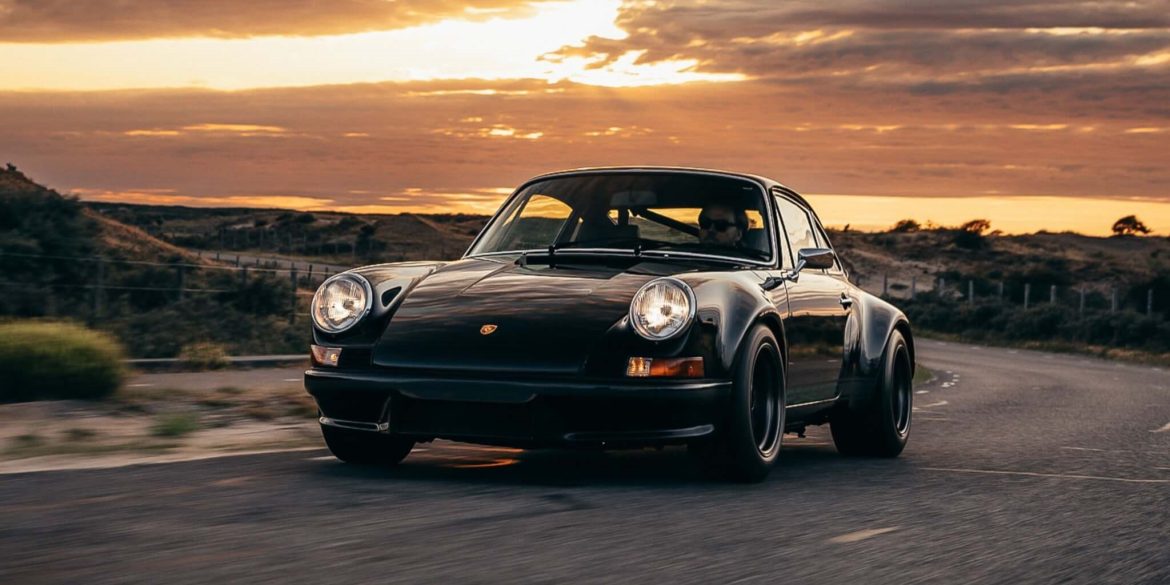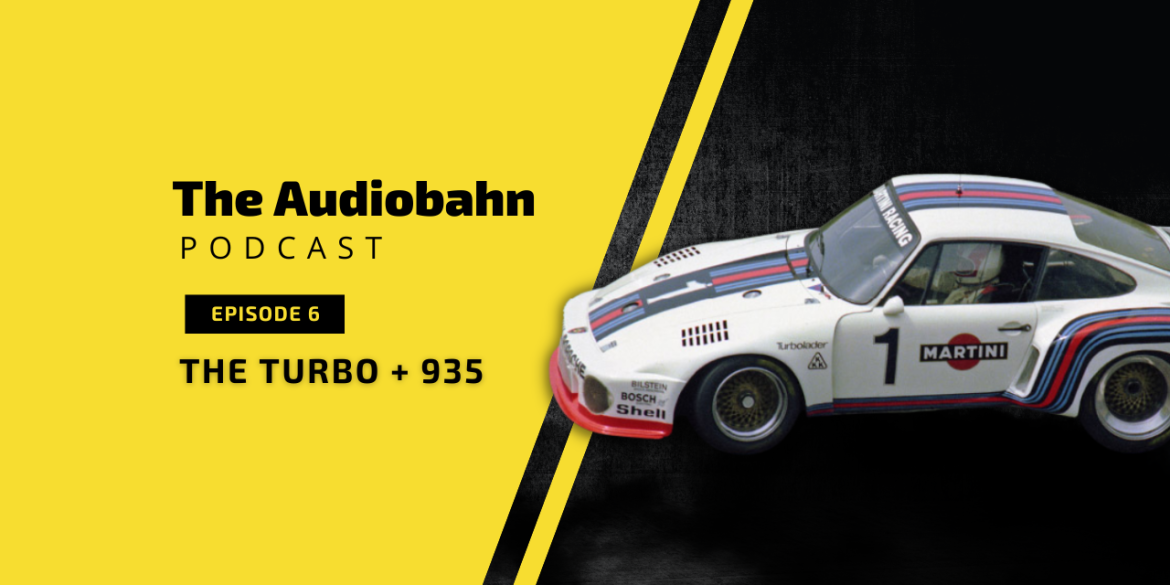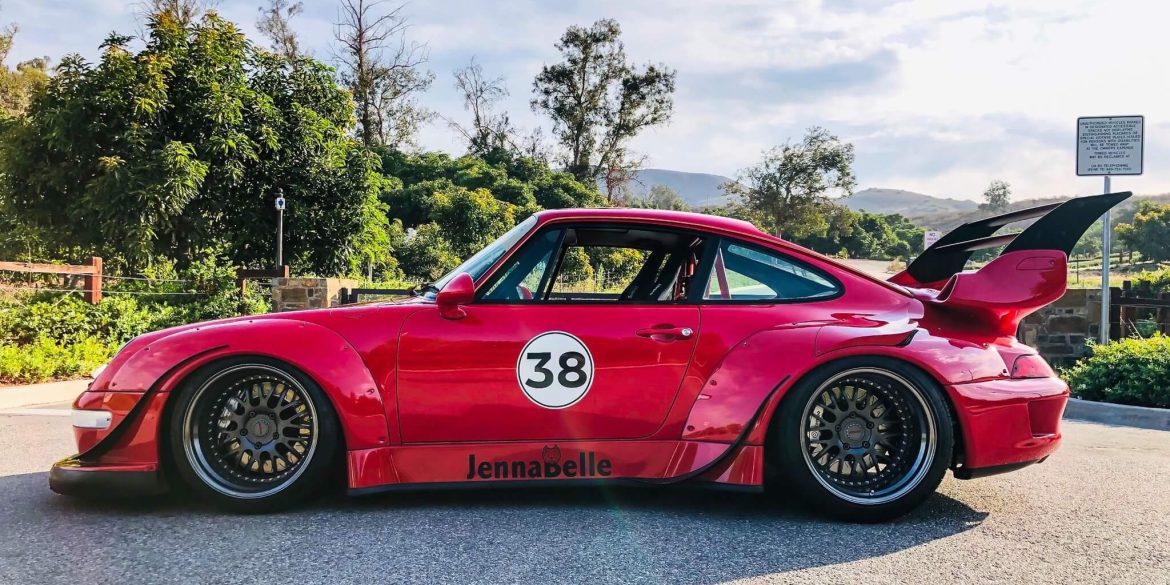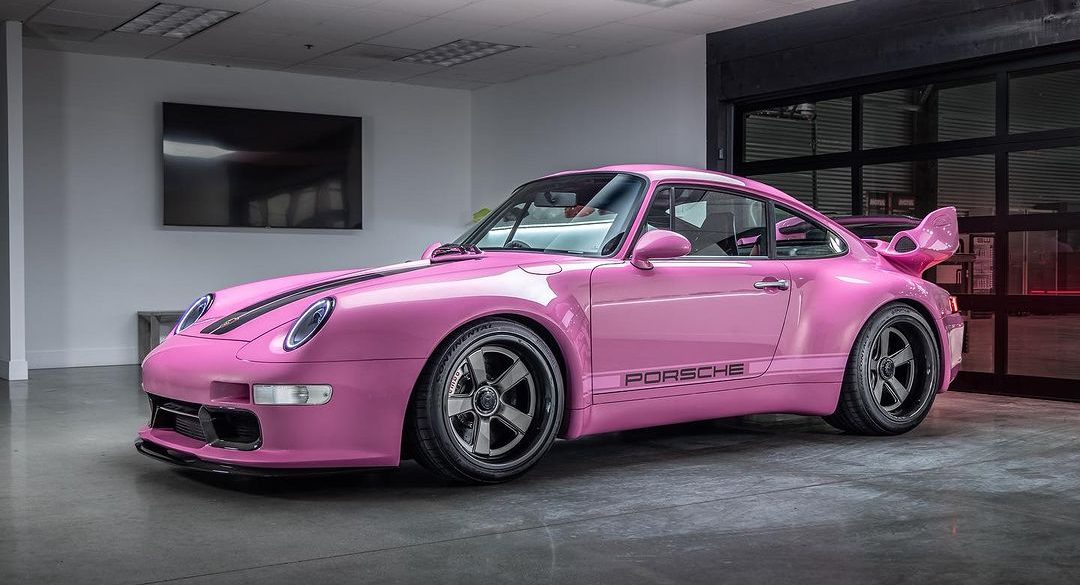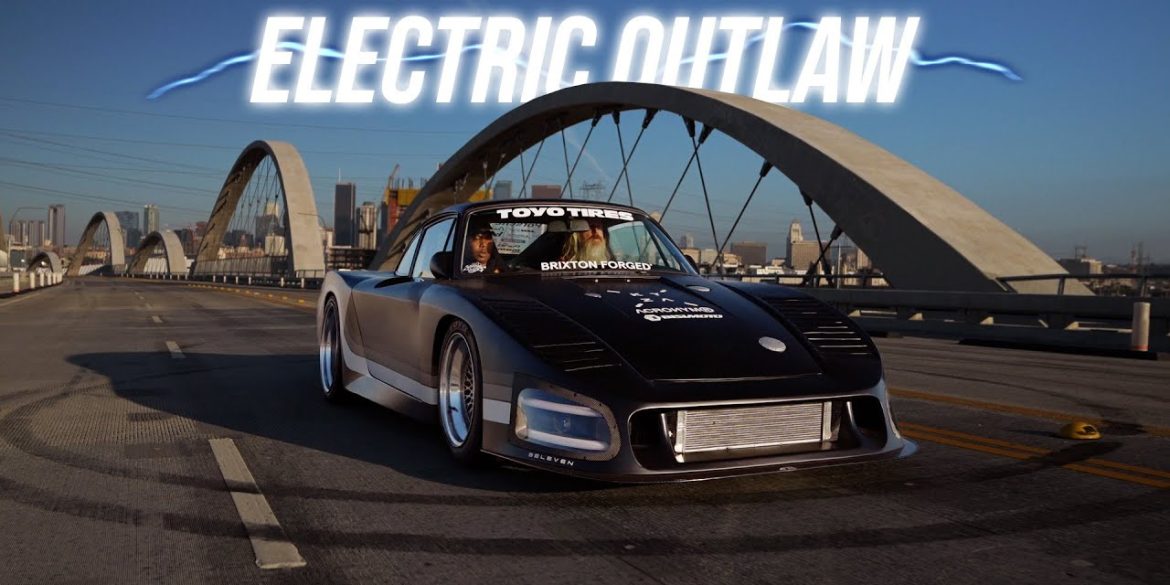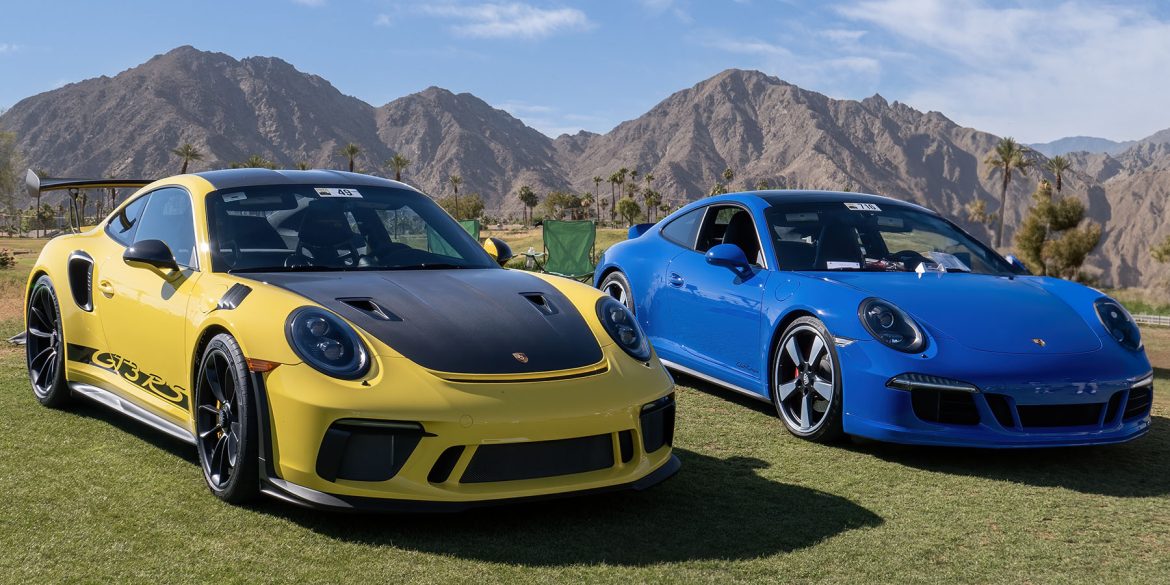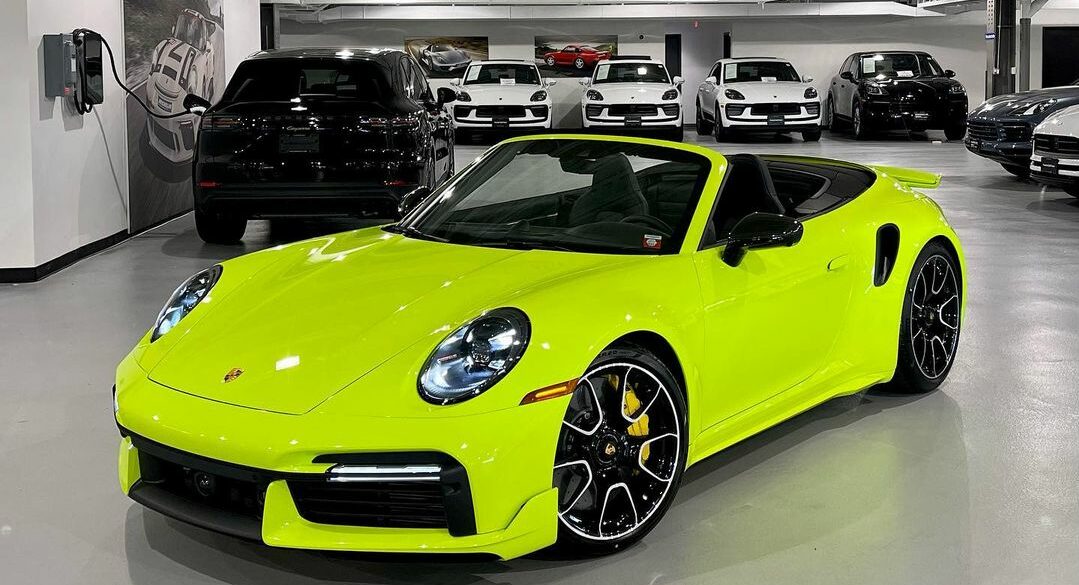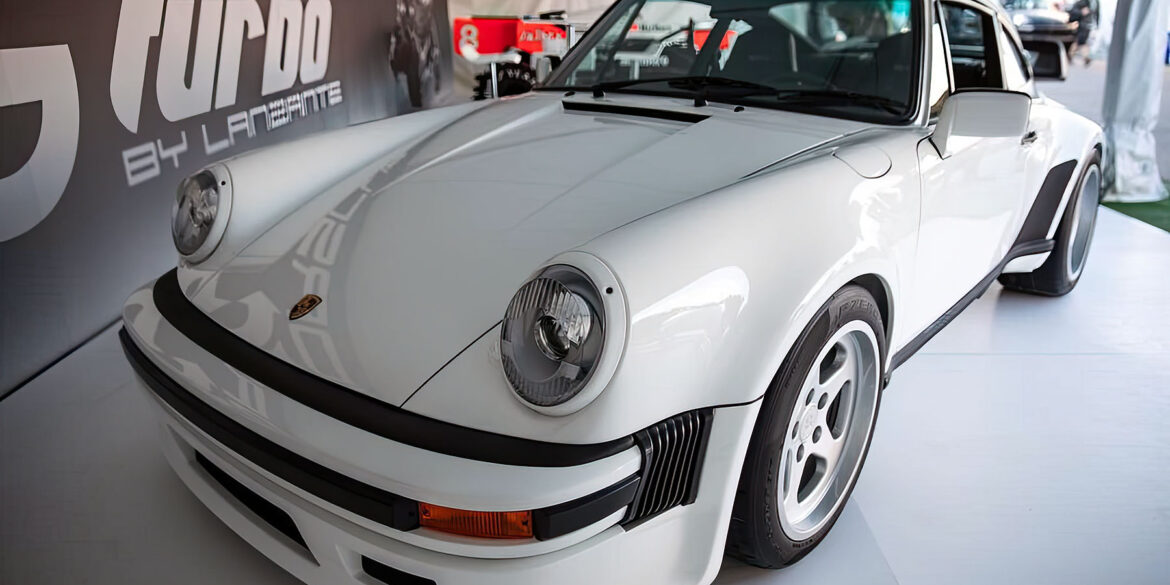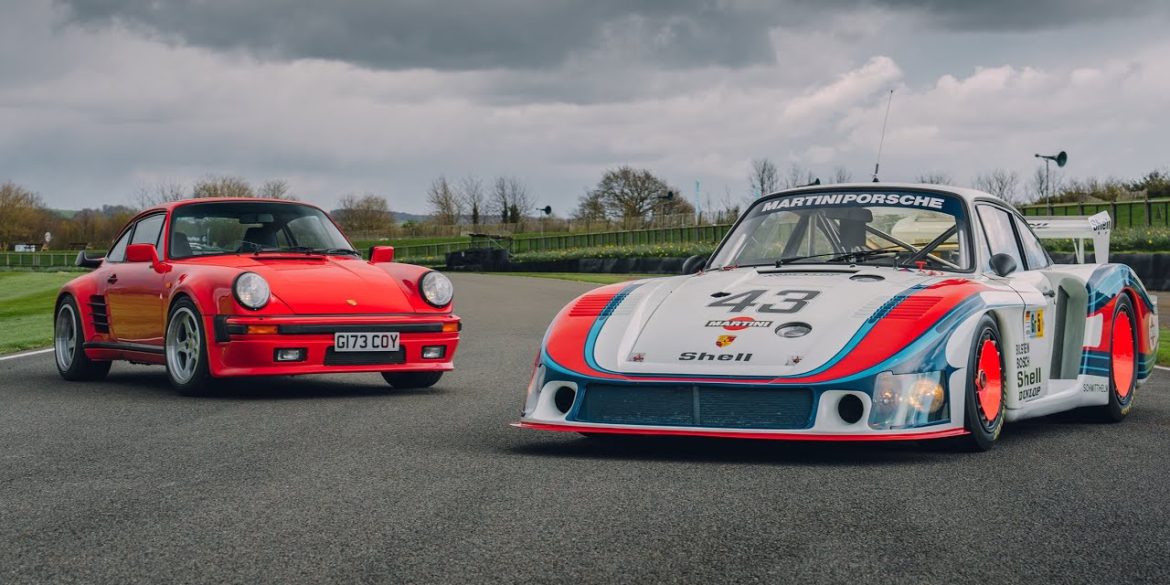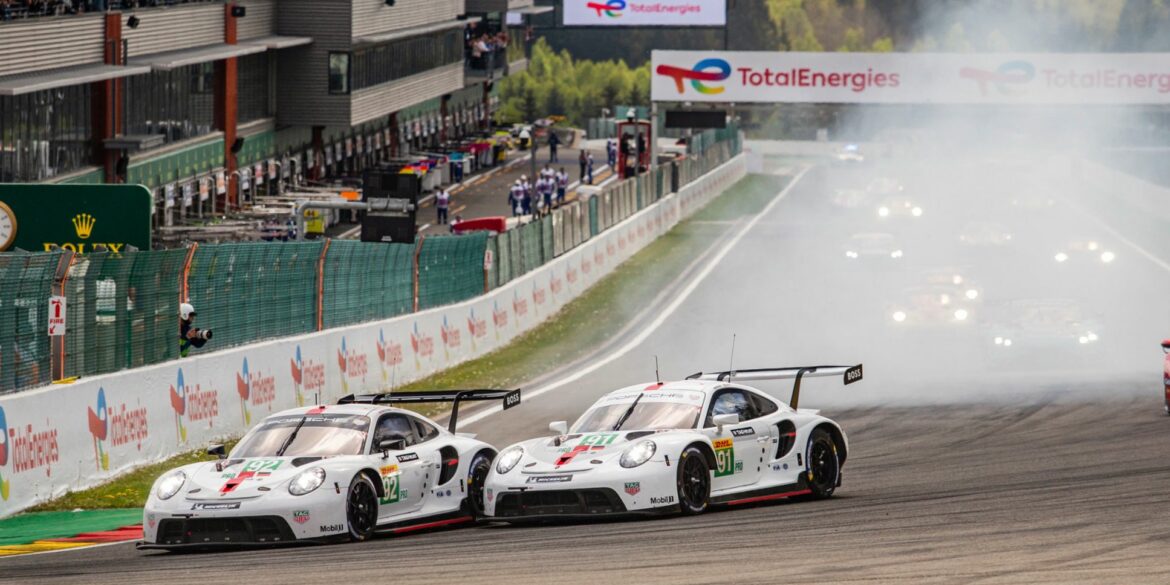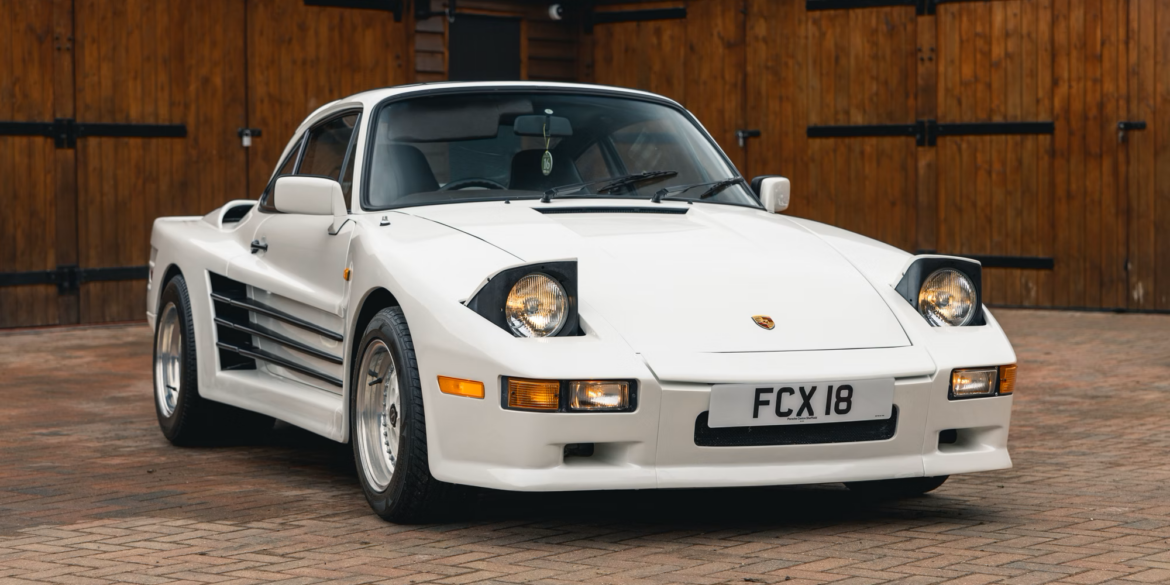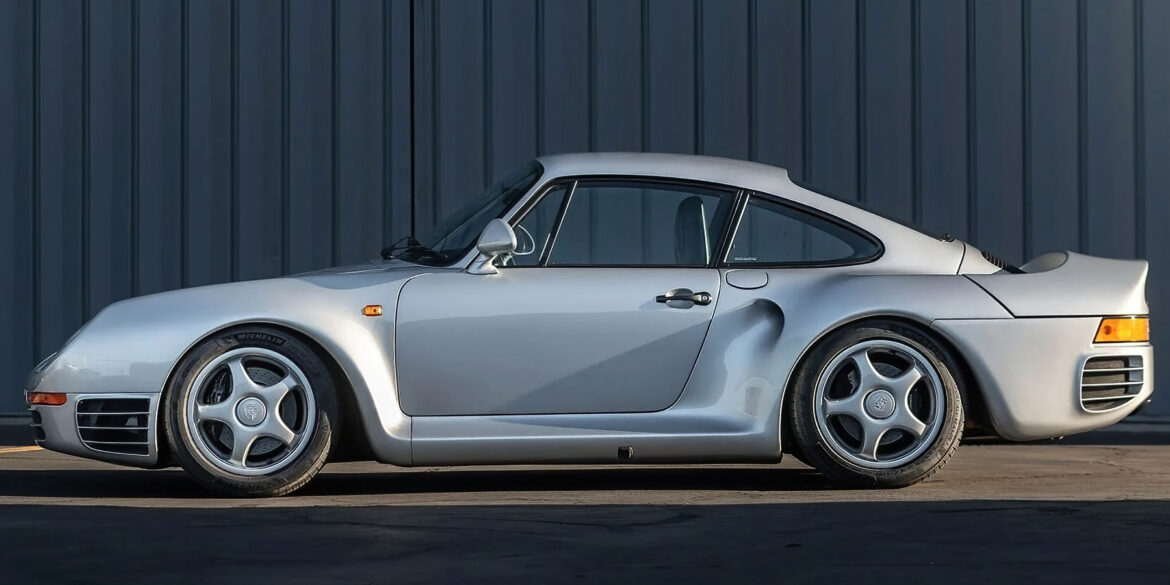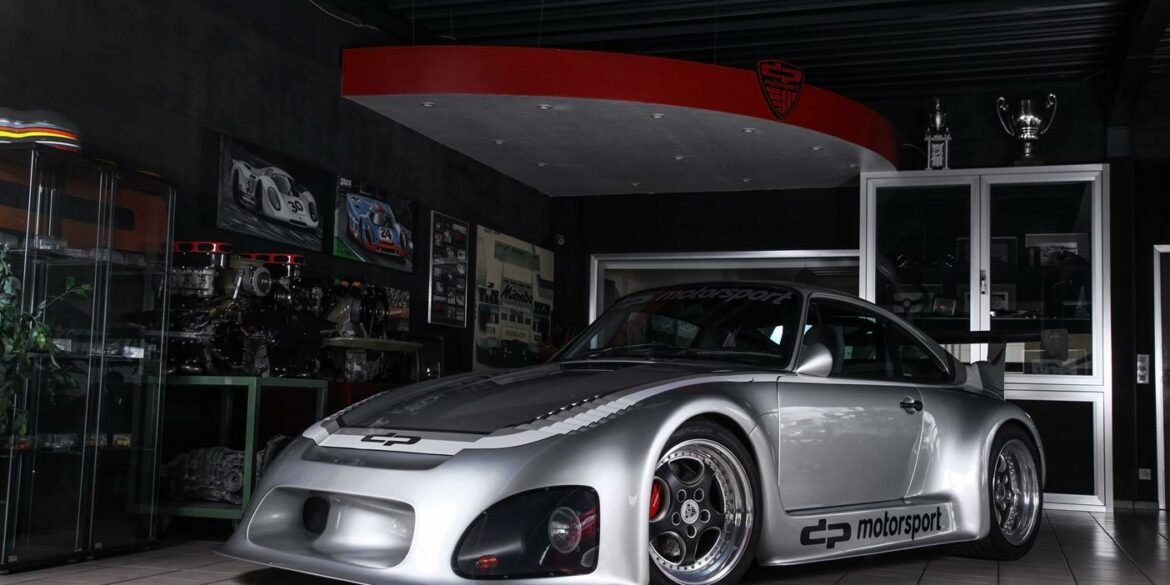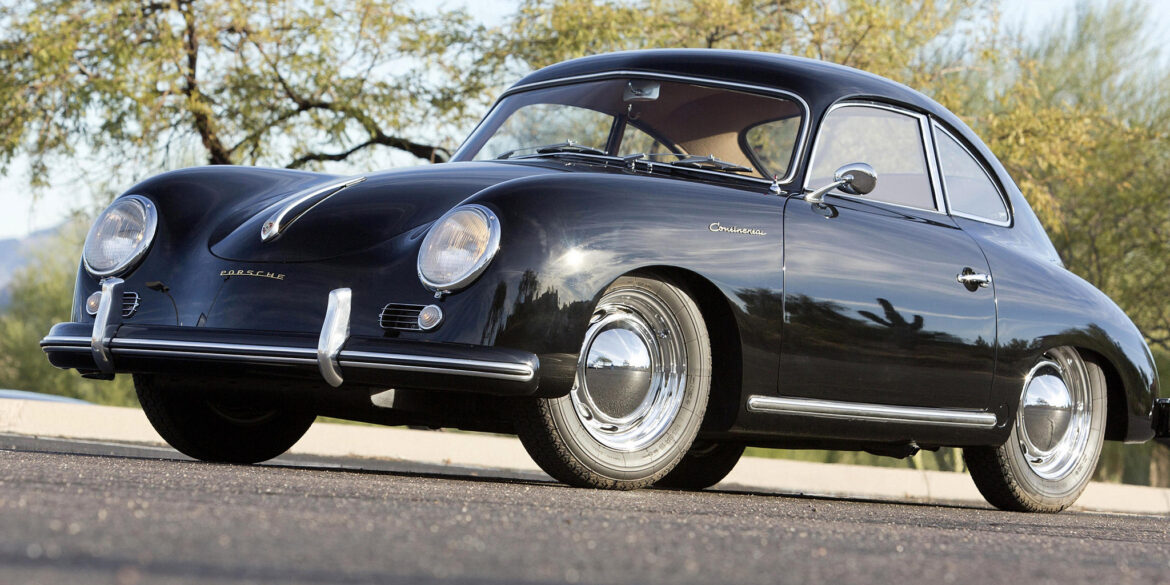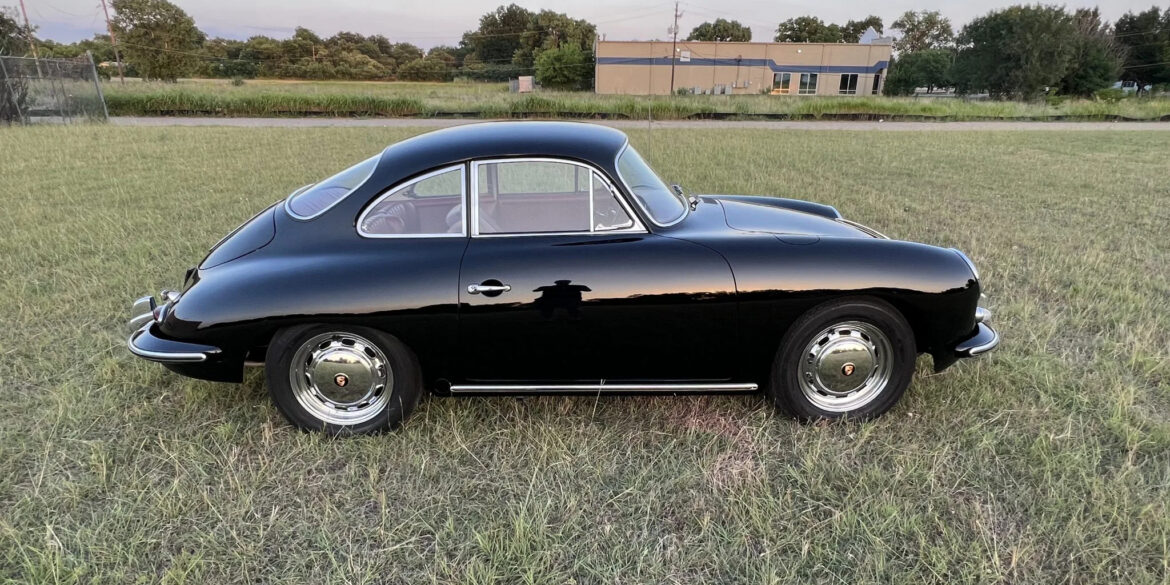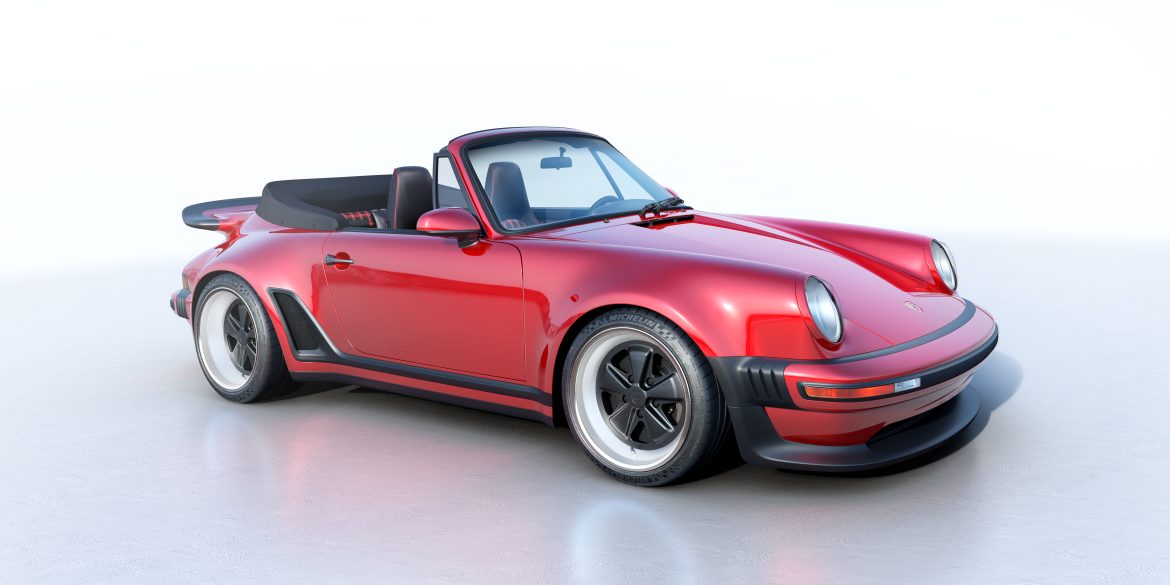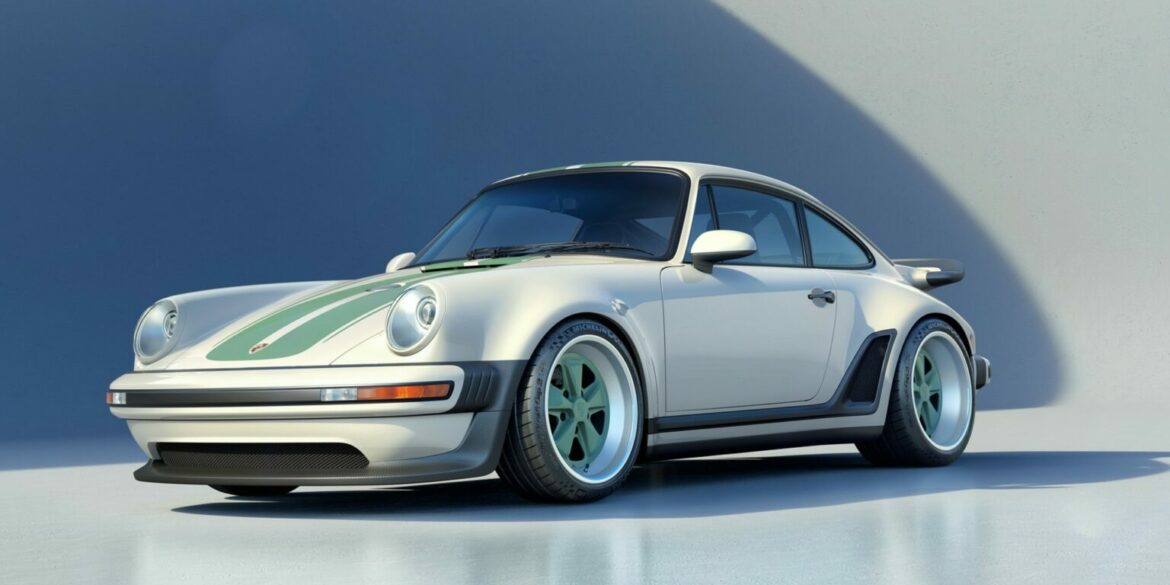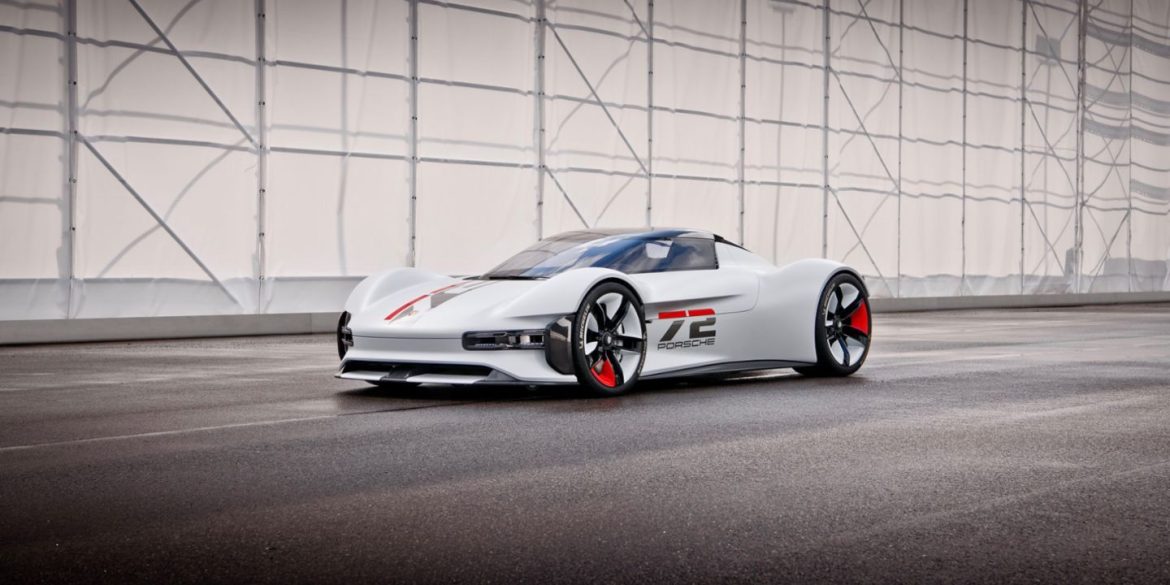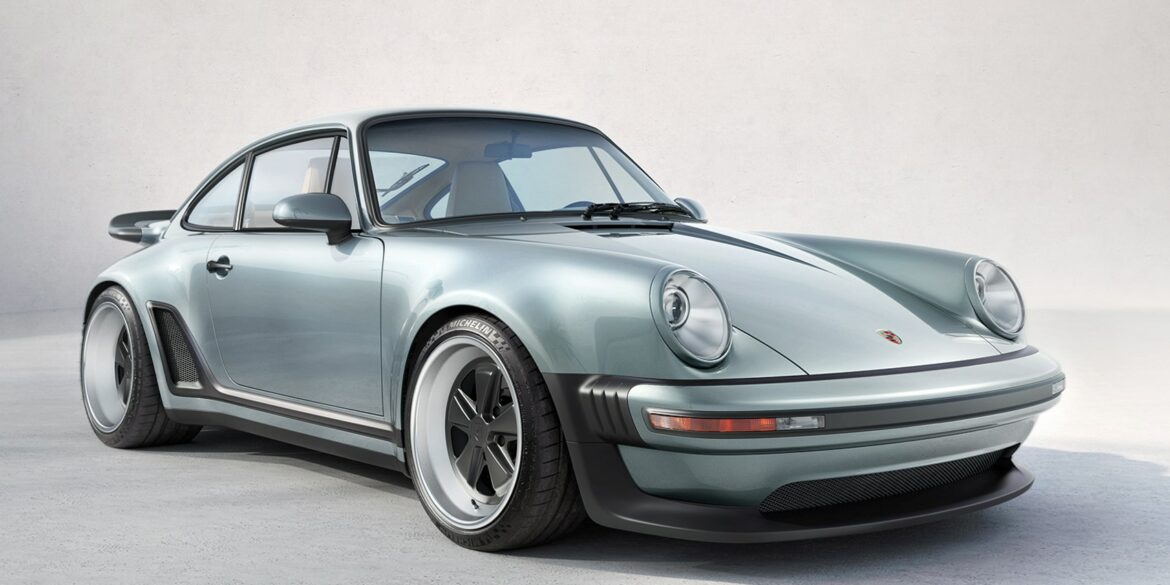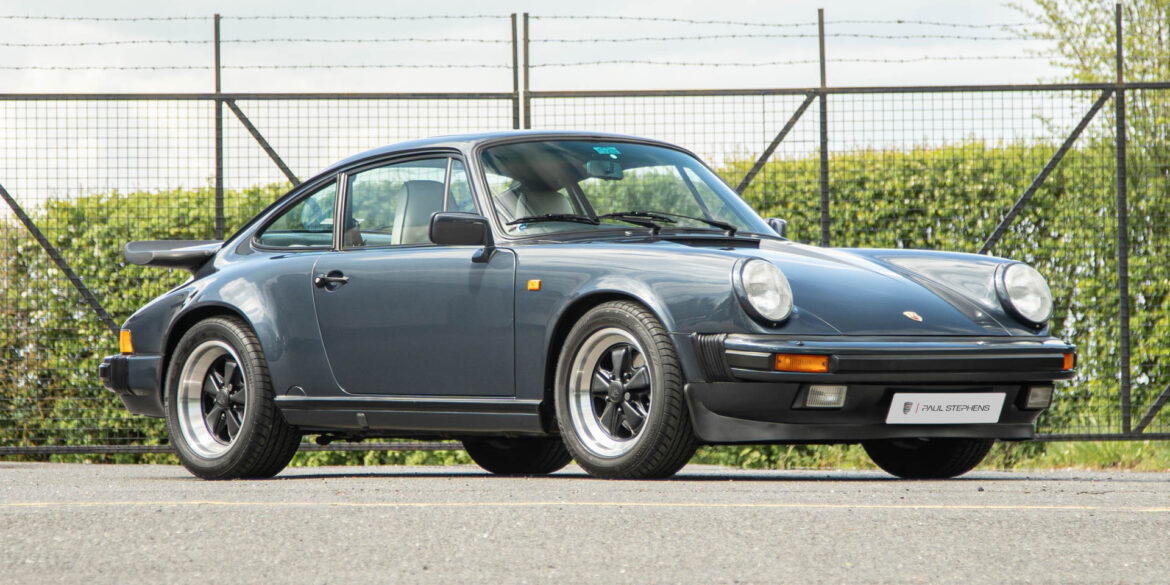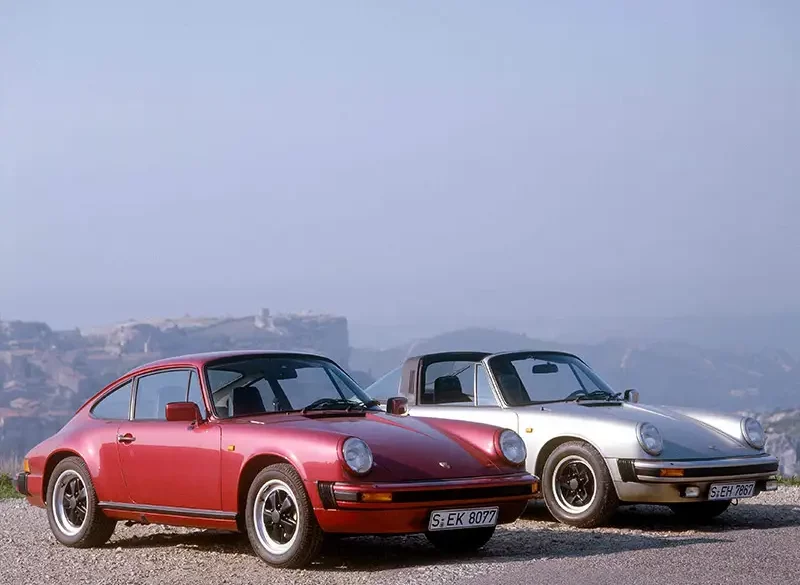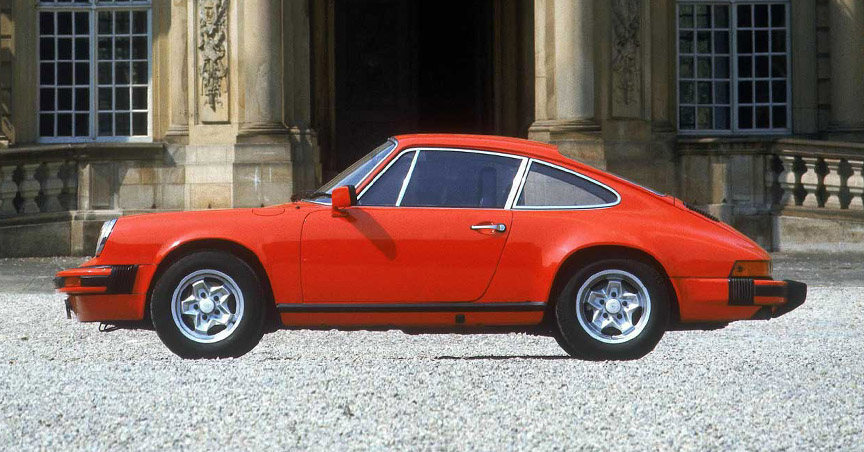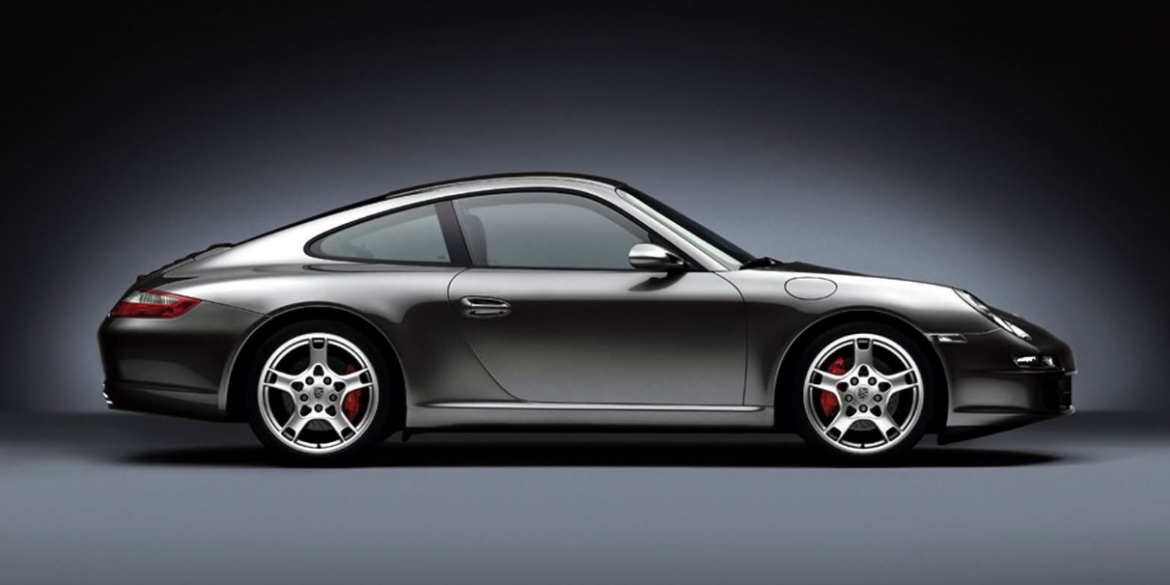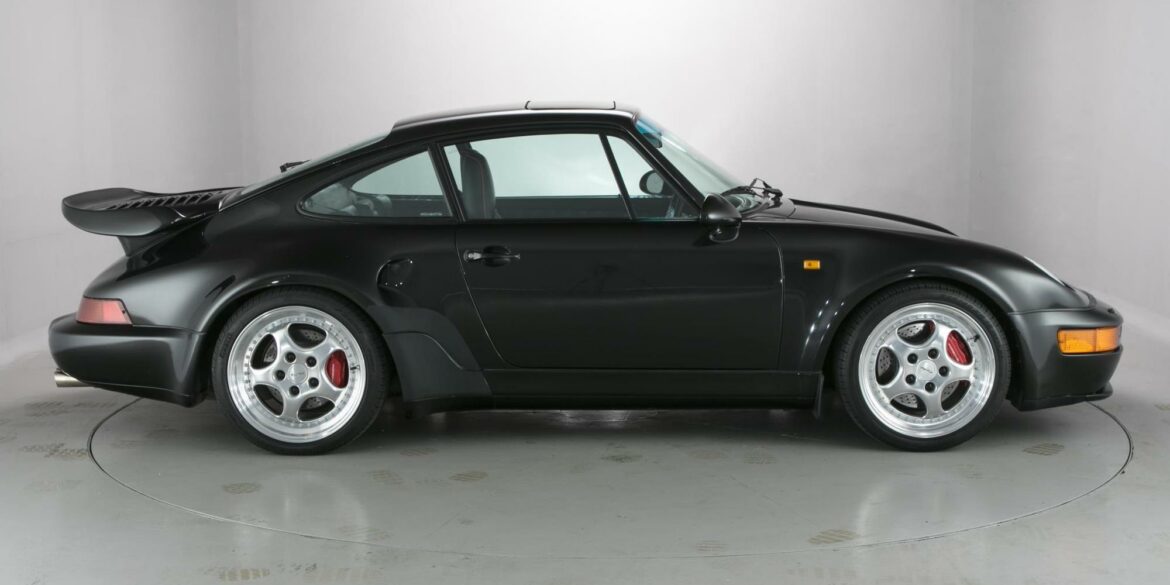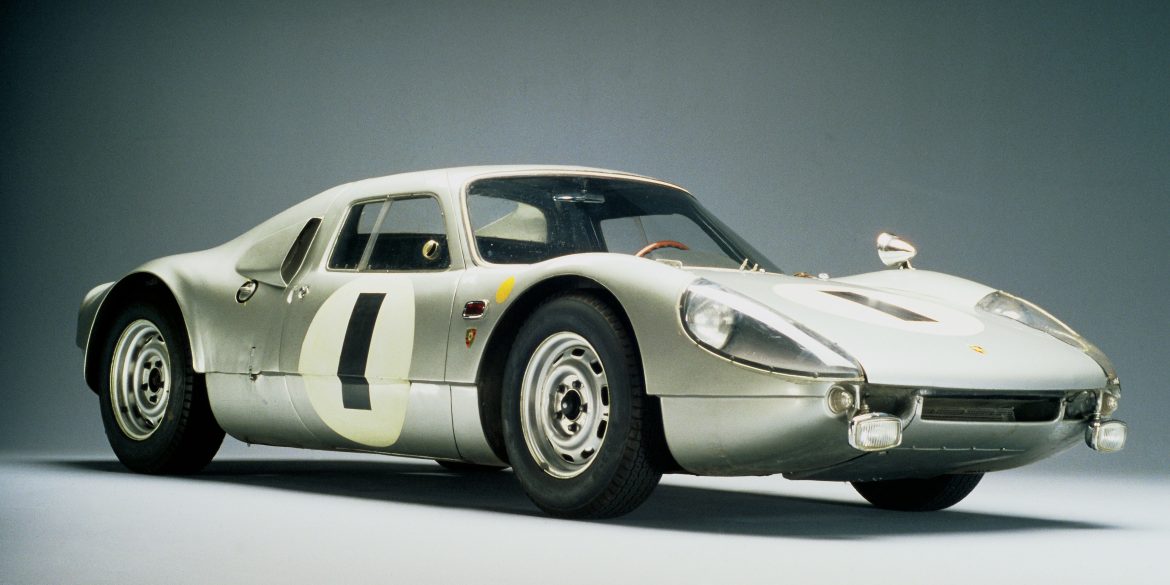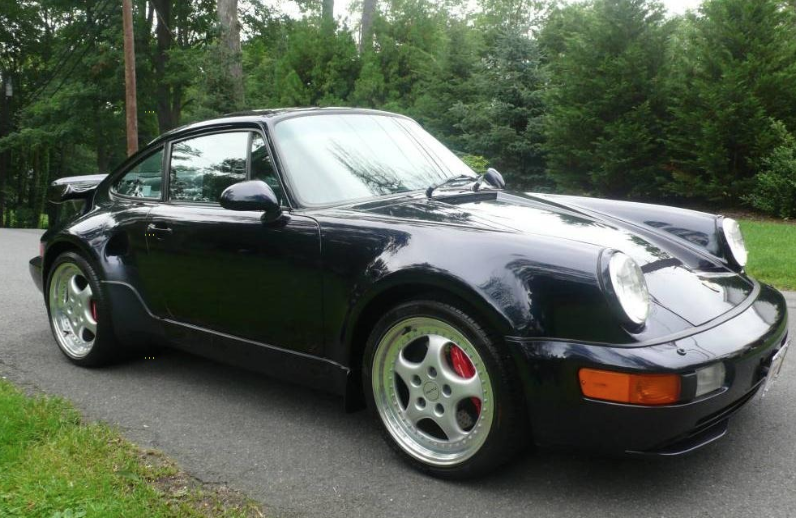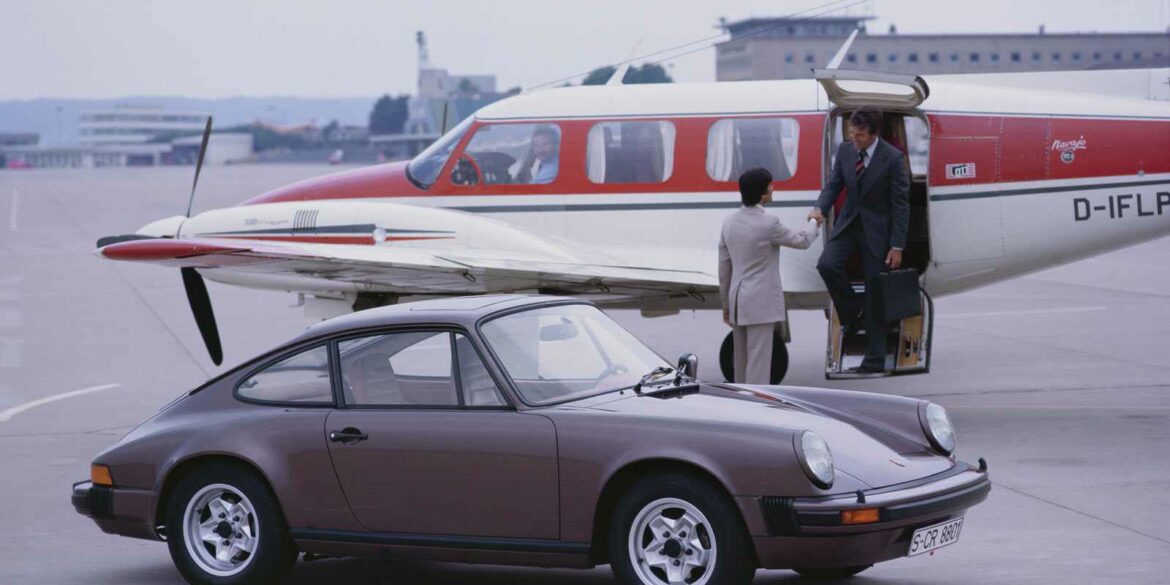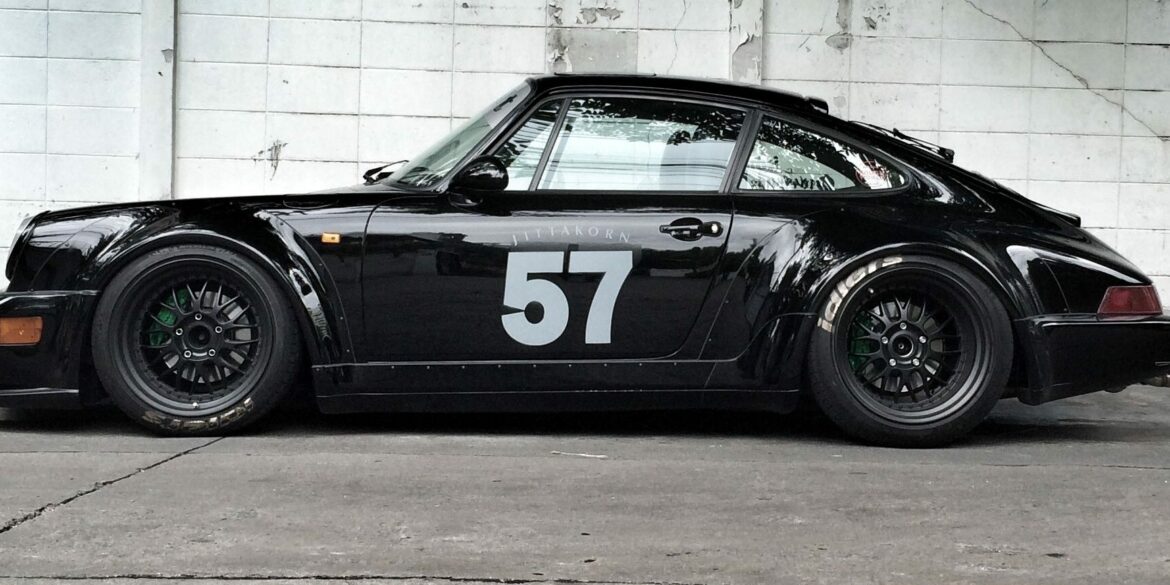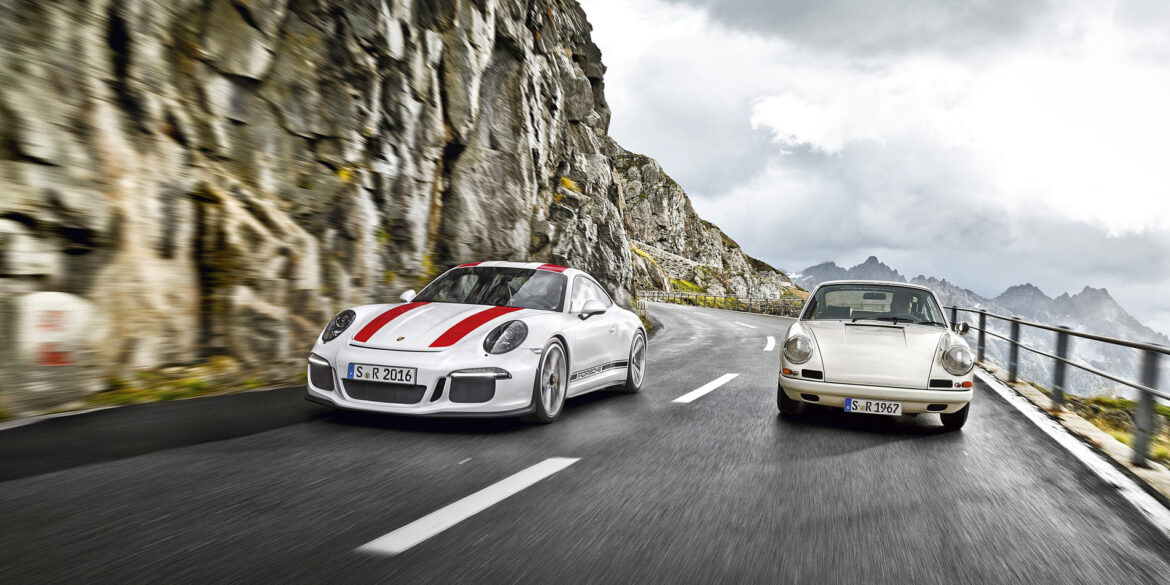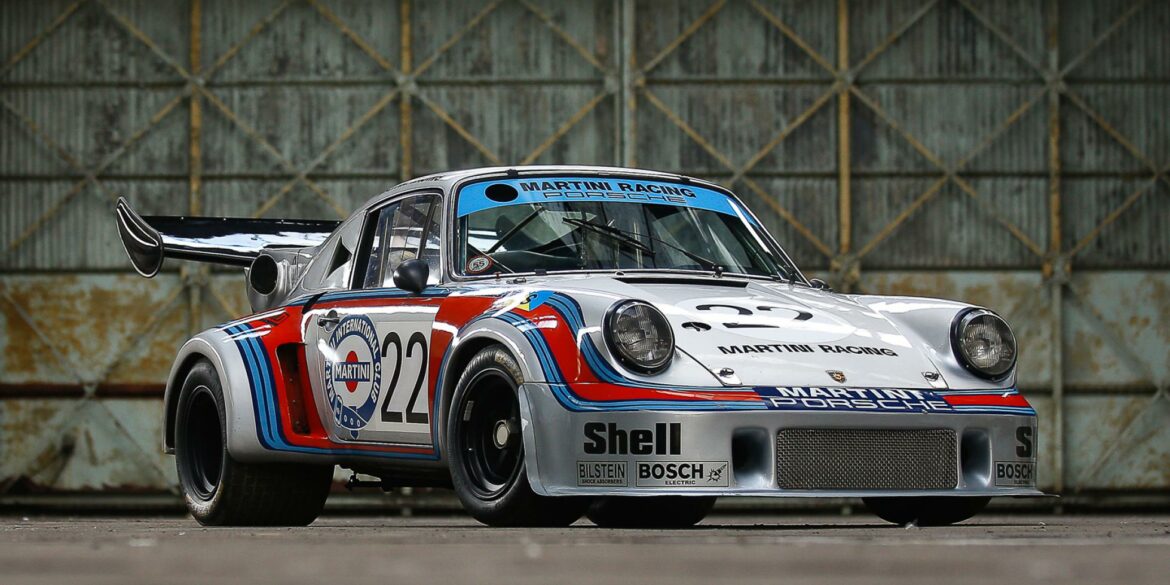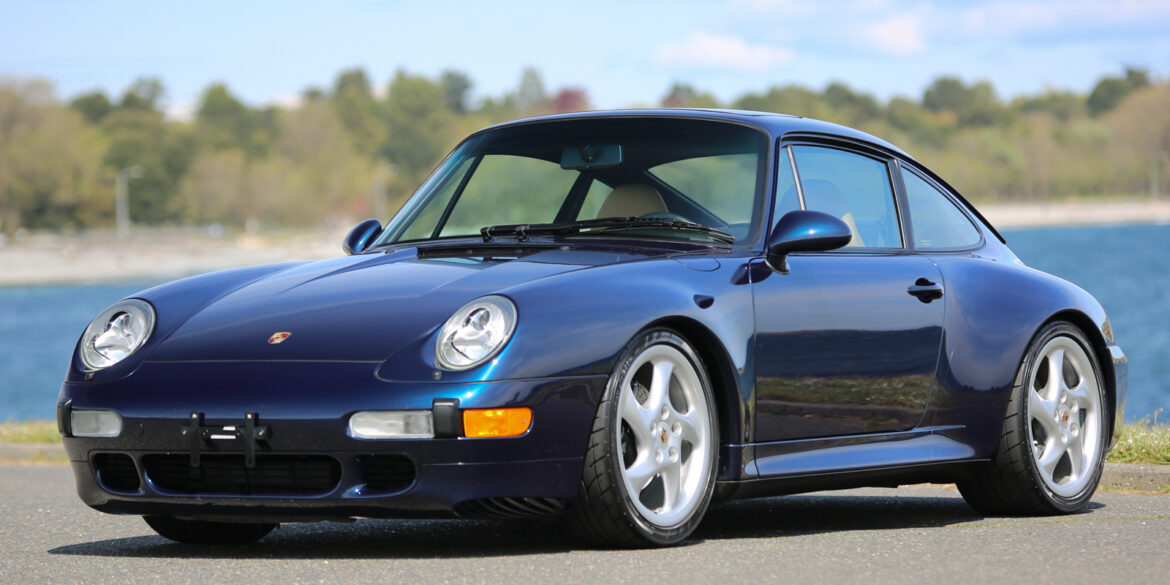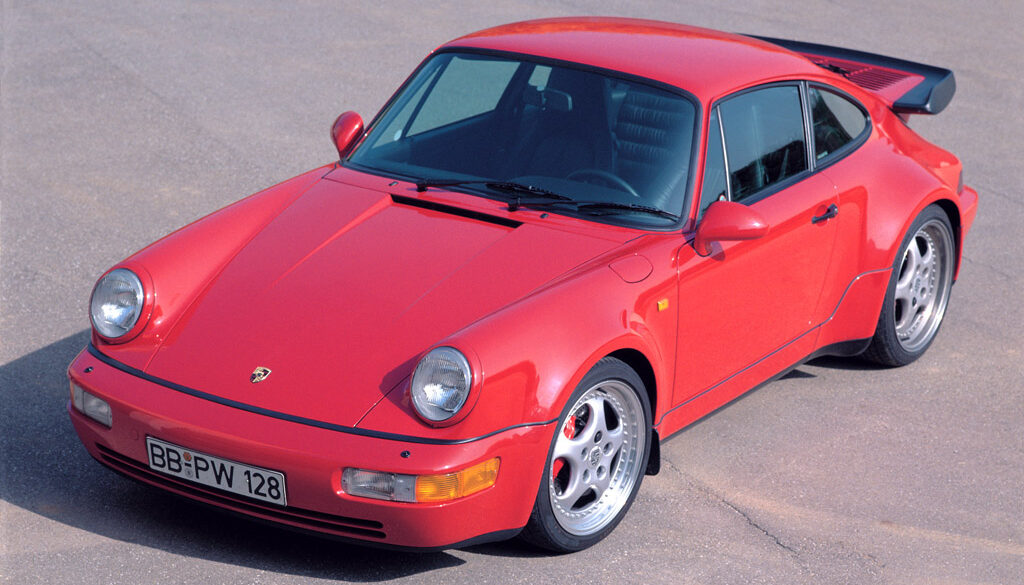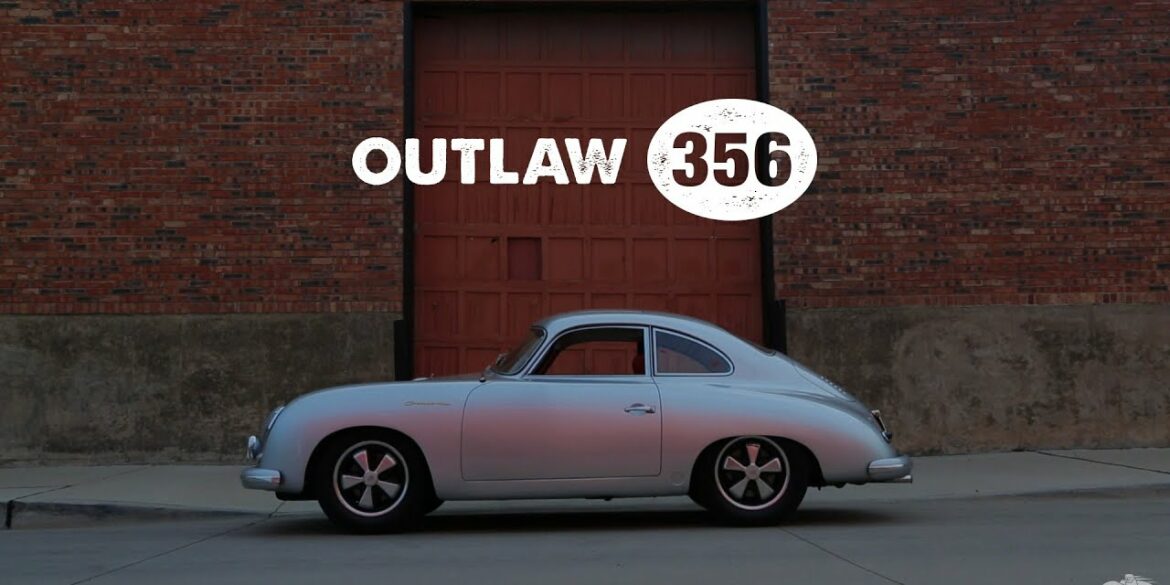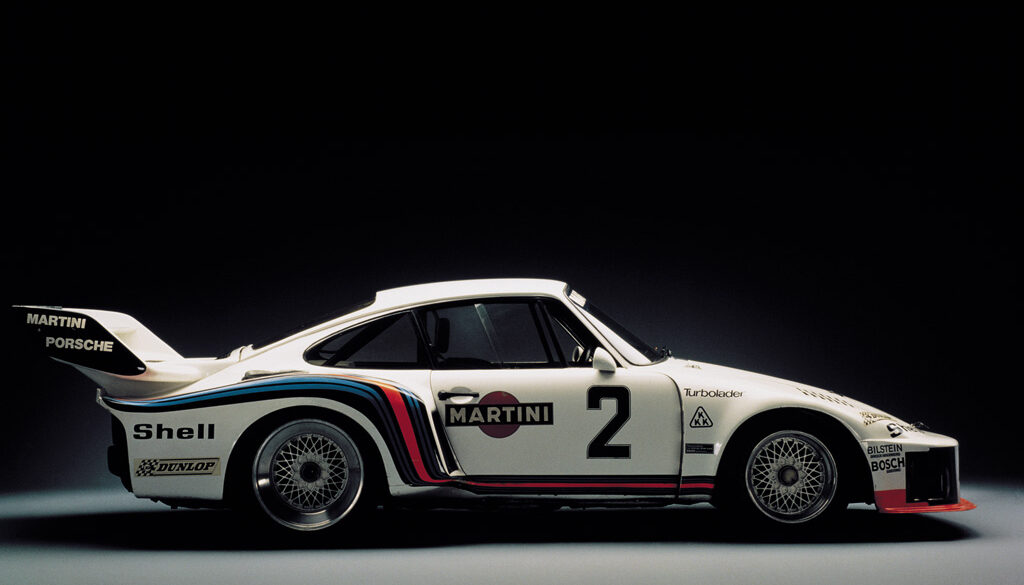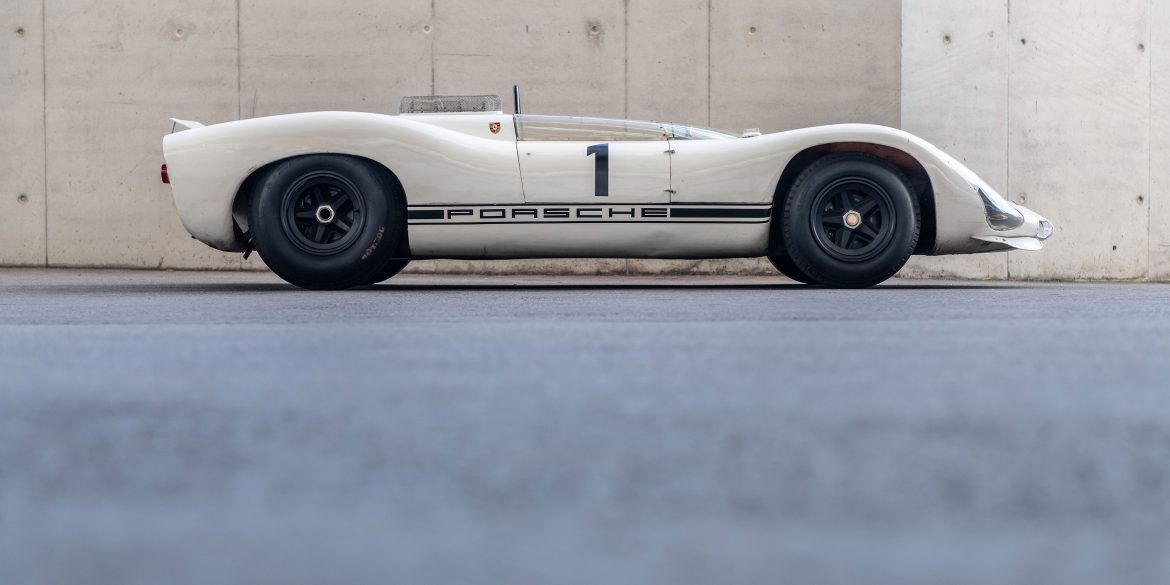Makellos Classics, a California-based Porsche specialist, has reimagined the 1979 Porsche 930 Turbo, featured in a video from Autotopia LA on YouTube. This pro-touring Resto-Mod refines the original’s performance and usability while staying true to its heritage. The 930’s turbocharged flat-six engine now features a 3.5L setup with a 964...
60 results for
930 research
Only 50 units made. The 911 Turbo Limited Edition comes equipped with the 330 bhp power unit normally only available in the 911 Turbo with Sport Equipment. In addition, the fitment of a limited slip differential as standard ensures the the increased engine performance can be used to it’s fullest extent. This Limited Edition also adopts the rear wheel air intakes of the Sport Equipment version. Essentially an SE without a slantnose front.
In 2009, Rob Dickinson—a musician and lifelong Porsche enthusiast—founded Singer in Los Angeles, using the air-cooled 964 as the foundation for his vision of the ultimate 911. What began as a personal pursuit evolved into a benchmark for reimagined restorations, transforming the Type 964 into bespoke creations that surpass traditional...
Highlights 1 registered owner! Research from experts indicates less than 10 Slantnose examples built The most advanced and powerful Ruf BTR – Version III Extremely rare RUF VIN BTR – approx. 25 total made worldwide 12,749 original miles – Documented maintenance history since new Stunning Grand Prix White and black...
Few dispute the Porsche 911’s status as the ultimate sports car, having evolved continuously for over 60 years—from its original 2.0-liter coupe to today’s high-performance variants. Still, Los Angeles musician and Porsche fan Rob Dickinson believed there was more potential. In 2009, he founded Singer, transforming the air-cooled 964 into...
The innovative mid-engine Boxster was the first result of Porsche’s spectacular return to form at the end of the 1990s An entry model was a well-established offering at Porsche which began in 1968 with the 4-cylinder 912 which in turn was supplanted by the 914. Unlike the 912 which was...
Few dispute the Porsche 911’s status as the ultimate sports car, having evolved continuously for over 60 years—from its original 2.0-liter coupe to today’s high-performance variants. Still, Los Angeles musician and Porsche fan Rob Dickinson believed there was more potential. In 2009, he founded Singer, transforming the air-cooled 964 into...
Some cars demand respect, and the Porsche 962 is one of them. This legendary race car dominated endurance racing in the mid-to-late 1980s. It was so successful that the FIA eventually banned it from competition, leaving many 962 race cars without a home. Around that time, a few tuners saw...
Honorable Mentions Porsche 924 The Turbo version is rare, often pricey, complicated and the best 924 bet is probably the run-out 924S which shared the 2.5 engine of the concurrent Porsche 944. A well-used but working S might cost $7000 to $10,000 and we saw a West Chester seller is...
This 1973 Porsche 911 Carrera RS 2.7 Lightweight is a rare and highly sought-after model, with only 200 units produced in the M471 Lightweight configuration. This particular example, set to be auctioned by Mecum Auctions in Glendale, California, on March 22nd, has an odometer reading of just 15,930 kilometers (9,874...
The Porsche 918 Spyder redefined the hypercar segment by integrating race-car performance, state-of-the-art technology, breathtaking aesthetics, and environmental consciousness. This particular 2014 Porsche 918 Spyder, listed for sale on Collecting Cars, has had only one owner and has covered a mere 930 kilometers (578 miles) since new. A true engineering...
A true collector’s piece from Porsche’s legendary Zuffenhausen factory, this 2005 Porsche Carrera GT is one of just 1,270 units produced and among only 644 delivered to the United States. Its 5.7L mid-mounted V-10 engine delivers 605 HP, paired with a 6-speed manual transmission and a twin-disc ceramic dry clutch....
From 1977 through the 1980s, Porsche 935s dominated Group 5, GTP, and GTX racing across Europe and North America. With later versions crafted by Kremer, Joest, Gaaco, and Fabcar, Porsche’s supremacy faced little opposition. This effort culminated in a historic overall win at the 1979 24 Hours of Le Mans....
When you have a company as storied as Porsche, with enthusiasts at every corner of the globe, some of those enthusiasts will start to collect cars. For some, it might be a project 928 in the garage beside the daily driver Type 996 911 Carrera. For others, it might be...
Some colors suit an era of 911 so well they become synonymous with that car. Oak Green Metallic is one such shade, and the 911 must be the 1970s Turbo. In fact,Dr. Ferry P orsche’s personal Turbo was specified in Oak Green Metallic, further evidence of the wise decision of...
One of the rarest Porsche 930 models was the hand-built 505-option ‘Flachbau’ or slant nose. This special-order Porsche package was inspired by the iconic twin-turbocharged 935 race cars and featured significant aerodynamic upgrades beyond the standard 930. The modified front end was part of a comprehensive set of enhancements designed...
Singer’s latest creation celebrates the iconic Porsche 911 by turbocharging it and basing it on the 930 Turbo from the mid-1970s, using a 964 chassis. It boasts 450 to 510 brake horsepower, depending on the specs. Options include a super lightweight model at 1,220 kg or a more luxurious version....
All images: © Dalton Watson Fine Books There are so many books that have been written on just about every Porsche model and motorsport achievement over the years, that it would be a fair to ask why we need yet another one. But therein lies the opportunity, because the subject...
Tuthill Porsche has earned acclaim in the rally world, transforming road cars into formidable rally beasts. Notably, they collaborated with Ken Block’s team on a Porsche 911 SC “Safari Rally Car” and partnered with Singer to craft the ultimate off-road 911: the Singer 911 ACS. Their latest venture, the Tuthill...
Gruppe B Rally aspirations In the early 1980s, Porsche was keen to prove its technological superiority learned throughout the previous decade’s racing efforts. The “Gruppe B” Study was created to display these advancements with development underway as soon as 1981. Turbocharging, first used on the 917/10 Can-Am racing car in...
Theon Design is rapidly establishing itself as a prominent figure in the realm of 911 restomods, specializing in the 964-generation Porsche 911 from 1989 to 1994. Founded by Englishman Adam Hawley, who brings an impressive technical background to the table, having served as a designer for over 15 years prior...
Released at the 2003 Geneva Auto Show, Porsche’s Carrera GT was a final production version of the concept car first seen at the 2001 Paris Auto Salon. It was Porsche’s first limited production supercar since 959 production stopped in 1988. At the time of launch, it was one of the...
Porsche revamps the Panamera: the third generation of the sporting luxury sedan is characterized by a wider range of digital features, a fresh and expressive design and a broader spectrum between dynamic performance and driving comfort. More powerful E-Hybrid powertrains (Panamera Turbo E-Hybrid: Fuel consumption* combined (WLTP) 1.7 – 1.2...
This 1988 Porsche 911 Turbo underwent a custom Carrera RSR-style restoration with backdated bodywork including a classic long-hood nose section, wide steel fenders, RSR-style bumpers, and a ducktail rear spoiler. Other features include chrome door handles and headlight rings, anodized silver window moldings, a polished driver’s side mirror, dual exhaust...
Theon Design is swiftly establishing itself as one of the prominent names in the realm of 911 restomods, specializing in the 964-generation Porsche 911 from 1989 to 1994. Founded by Englishman Adam Hawley, who brings an impressive technical background to the table, having served as a designer for over 15...
The Audiobahn E6: The Porsche 911 Turbo & The 935 Welcome to The Audiobahn, the Stuttcars.com podcast focused on all things Porsche. In our first series, we’re exploring the history of venerable 911: its history, origins, achievements, and future. The Audiobahn E6: The Porsche 911 Turbo & The 935. Read the...
The third example commissioned at Rauh-Welt Begriff Los Angeles, “JennaBelle,” was individually crafted according to custom specifications by RWB’s founder, Akira Nakai. This 993 model features comprehensive performance enhancements, such as an RS flywheel and clutch, Fabspeed Supercup exhaust, Brembo GT brake kit, and a JRZ RS-Pro adjustable suspension setup....
Gunther Werks, a California-based Porsche specialist, has unveiled an awe-inspiring restomod of the Porsche 911 (993) at the esteemed Goodwood Festival of Speed. This remarkable creation pays homage to the iconic 993-generation Porsche 911 and is also meant to celebrate the company’s debut into the United Kingdom & European markets....
Magnus Walker’s popular YouTube series, “Other Peoples Porsche,” explores unique and fascinating Porsche cars across the country. From a 1969 Porsche 911T in New York to a 1982 Porsche 930 Turbo in Miami, Magnus has already seen some remarkable examples from the German brand. In the newest episode of his...
No desert mirage After canceling their initial plans due to Covid, the PCA’s annual “Porsche Parade” was back on the calendar for 2023 for Palm Springs, CA. The week-long celebration of the Porsche marque is filled with seminars, drives, mixers, and of course, the Concours d’Elegance. Long known for their...
The 2022 Porsche 911 Turbo S Cabriolet is a formidable beast. The new Turbo S comes with an all-new, 3.8 liter boxer six with two variable turbine geometry (VTG) turbochargers. The power output is a staggering 640 hp and 590 lbs-ft of torque. In keeping with previous Turbo models, the...
The 7-figure 911 will solve all of life’s problems Many of us, including myself, continue to watch in disbelief as the market for custom-built 911 continues to grow. Years ago I submitted a letter to Road & Track which was published (unfortunately). In detail, I shot down the Singer when...
Harry’s Garage, drove his Porsche 930S to Goodwood on setup day and as incredibly lucky. He got a closer look at the historic 911 race cars that the Porsche Museum had brought for this year’s Goodwood Members meeting. Take a behind-the-scenes look at these iconic race cars....
If there is one thing that can be said about those who are enthusiastic about, or even own, a car from our favorite manufacturer in Stuttgart, it’s that we all appreciate showing our enthusiasm in many ways. Some draw, others write, and even more take really nice pictures or videos...
The Rinspeed Porsche R69 Turbo, aka Porsche Testarossa, was a limited production car from Switzerland. It is believed that around 12 were built for clients in Europe and beyond. Although unofficial, the Testarossa nickname was popularly used for this car, which was likely not appreciated by Porsche or Ferrari. The...
1987 Porsche 959 Komfort Born in the mid-1980s the Porsche 959 it was a technological masterpiece filtering advancements across the 911 range well into the 1990s. Financially, it became a headache. Delays and cost overruns clouded the 959 production process in a fog that, in time, has been lifted to...
Almost Extinct The Porsche 911 came very close to extinction. American Peter Schutz began his tenure as CEO at Porsche on January 1, 1981. He didn’t take the job to save the 911 but when he arrived, he found a company that had decided to abandon the 911 in favor...
Breathtaking DP Motorsport 935 DPIII Custom Porsche Based in Overath (near Cologne) in Germany, DP Motorsport was founded in 1973 by car nut Ekkehard Zimmermann. In the 1970s and 80s DP Motorsport built and modified Porsche 935s that raced the 24 hours of Le Mans and other championships, mainly for...
The Porsche 356 was the first production car from Porsche. Earlier cars designed by the company included Cisitalia Grand Prix race car, the Volkswagen Beetle, and Auto Union Grand Prix cars, but it was the 356 that changed things forever for sports car enthusiasts the world over. Ferdinand Porsche, Sr....
Some pretty interesting Porsches are currently being offered at Bring A Trailer at No Reserve: a 1964 Porsche 356C Coupe, a 1992 Porsche 911 Carrera RS Touring, and a 2014 Porsche Boxster S. 1964 Porsche 356C Coupe The 1964 Porsche 356C Coupe example originally had a Light Ivory (6404) finish...
California-based luxury specialist Singer just released their first reimagined Porsche 911 (Type 964) Cabriolet. After getting some requests from owners, Singer responded with their latest restoration services as a result of the company’s Turbo Study that will be used on the cabriolet body style of the Type 964. Singer’s research...
I just love the Porsche 930 Turbo built between 1978 and 1989, with her massive rear ‘whale tale’ wing and those wide fenders over the rear Fuchs alloys, but those cars have become classics by now, and they come with a price tag to match their status … which in...
If you’re like a few of us here at the StuttCars office, you’re the kind of person who has gained a serious interest in racing games, and to some extent, sim-racing over the past couple of years. While this can be put down mostly to the global pandemic as a...
Personally, I just love the Porsche 930 Turbo, especially the 3.3-Liter version made between 1978 and 1989, with nearly 19,000 units made at Zuffenhausen, Stuttgart in West Germany, it shouldn’t be a rare car, but with the last one leaving the factory doors over 30 years ago, you will understand...
The replacement for the SC series came in 1984 as the 911 3.2 Carrera, reviving the Carrera name for the first time since 1977. This was the last iteration in the original 911 series, with all subsequent models featuring new body styling and new brake, electronic, and suspension technologies. Almost the same galvanised body as the SC. Engine was claimed to be 80 per cent new, and the first production 911 to feature an ECU to control the ignition and fuel systems.
The 911 SC effectively replaced the 911 S and was one of Porsche's first models that was meant for the international market. It was sold as a cheaper alternative to the 911 Turbo. The SC used an unblown version the 930 Turbo unit that offered 180 to 200 bhp depending on model year. Options included the rear whale tail, front chin spoiler, Bilstein dampers, 16 inch wheels with Pirelli P7 tires and sports seats. Sometimes dealers lumped these options together to create their own sport package. It was available as a Coupe and Targa from 1978 - 1983, while the Cabriolet version was only available in 1983.
Porsche 911 (G-Series) (1973 – 1989) Story & History G-Model – The 2nd Generation Porsche 911 Premiere: September 12, 1973 IAA Frankfurt Starting with the model year 1968, Porsche internally assigned a letter to each model year – MY1968 was “A”, MY1969 was “B” and so on. Model year 1974...
Porsche 911 (997) (2004 – 2012) Story & History Type 997 – The 6th Generation Porsche 911 Official photos: 2004 May 7 / Premiere: 2004 July 16 at 9:11 pm at all the 85 Porsche centres in Germany / Market launch: 2004 July 17 On May 7, 2004, Porsche announced...
The Porsche factory had 93 Turbo chassis left. These were all transferred to Porsche Exclusiv and hand built as the very special 964 Turbo 3.6 S. They were offered with normal, or ‘Flachbau’ slant nose front ends. While the vast majority of Turbo S’ were fitted with the ‘Flachbau’ nose as a no-cost option, the Turbo S could also be had with the traditional 964 nose as well. In all, 76 Flatnose cars were made while 17 non-Flatnose (known as Package option) cars were made. These cars were also fitted with the X88 option, which increased power to 380 hp. 75 flatnose units were produced.
Porsche’s Type 904, officially called the Carrera GTS because Porsche and Peugeot were in dispute over numeric designations with “0” in them, succeeded the RSK Type 718 as the last sports-racing iteration of the 356 series. Developed after Porsche left Formula One in 1962, the 904 (as it soon became popularly known) was also the last full-competition Porsche that could be readily driven on the street. This is the full story.
19 non 'slant nose' or Package cars were made for the USA only. Very rare. The Porsche factory had 93 Turbo chassis left. These were all transferred to Porsche Exclusiv and hand built as the very special 964 Turbo 3.6 S. They were offered with normal, or ‘Flachbau’ slant nose front ends. While the vast majority of Turbo S’ were fitted with the ‘Flachbau’ nose as a no-cost option, the Turbo S could also be had with the traditional 964 nose as well. In all, 76 Flatnose cars were made while 17 non-Flatnose (known as Package option) cars were made. These cars were also fitted with the X88 option, which increased power to 380 hp.
Porsche 911 (G-Series) The Ultimate Model Guide 2nd Generation Porsche 911 (1974 – 1989) The Story / Timeline / Details / Model Guides / Performance & Specs / Data & Research / Pictures & Videos / News & Updates The Porsche 911 G model was a true perennial and was built for a full 17 years. During this time, engines were built with 2.7,...
The Pinnacle of Porsche Tinkerers, Here is Our List of The Best Restomod & Porsche Restoration Shops Our interest in writing a post specifically about Porsche restorations began when we got feedback from readers about our greatest Porsches ever and best Porsche 911s lists. Readers told us we should include...
The All Time Greats – 70 Best Porsches of All Time (Ultimate List) Clearly we have been a bit of a “best of Porsche” run lately. With Porsche celebrating 70 years in 2018 we felt it was a good time to dive deep into Porsche history and pick our favorite...
Definitive List of the Best Racing Cars Porsche Has Ever Raced Porsche Race Cars Porsche 917 Porsche 550 Spyder Porsche 718 Porsche 904 Porsche 935/77 Porsche 935/78 ‘Moby Dick’ Porsche 911 RSR 2.14 Turbo Porsche 911 GT3 R Hybrid 2.0 Porsche 919 Hybrid Porsche 911 GT1 98 Porsche 936 Spyder...
Porsche has made a lot of cracking 911s over 50+ years. We Pick the Best Production, Limited Edition & Race 911s of All Time. Greatest 911s 1963 Porsche 901 1967 Porsche 911 S 1967 Porsche 911 R 1973 Porsche 911 Carrera RS 2.7 1974 Porsche 911 Carrera RS 3.0 1974...
The 1989/90 change of model year saw the launch of the Porsche 911, 964 series onto the market. This 911 model was initially available as a Coupe, Targa and Convertible. From model year 1991 onwards Porsche also introduced its top-of-the-line model - the Turbo - into this series. In spite of bearing a major similarity in terms of look to the naturally-aspirated model, the extended wings remained. This meant that the new Porsche could retain its turbo look. The 964 Turbo model was the successor to the Porsche 930. The 964 Turbo was the end of an era, the last of the single turbo rear-wheel drive 911 Turbos.
Modified his 1955 Porsche 356 Continental, Nowadays, it seems “outlaw” Porsches are everywhere and all the rage. Back in the mid-1990s, however, when Mr. Jack Griffin decided to modify his 1955 Porsche 356 Continental, he wasn’t following a customization trend or fad but, rather, taking it upon himself to build...
The Group 4 racer based on the 911 Turbo (930) was called 934 and the Group 5 Porsche was called 935. The first version of the 935 looked similar to the 911 Carrera RSR. The first customers for 935 were Martini Racing and Kremer Racing. The Martini car was a full factory development, while Kremer made its own enhancements already before the first race. By 1977, the 935 was sold as a customer car for these series to race against cars like the BMW CSL.
In 1967 and 1968, the Porsche 910/8 Bergspyder was the dominant force before the 909 came along. Porsche’s 910 was essentially an updated 906 and were championship-winning machines thanks to being extremely nimble and well-suited to mountain roads. It had titanium (brake calipers), beryllium (brake discs), magnesium (wheels), electron (tank), plastic (body) and aluminium. The running gear was similar to that of a Formula 1 car, including an eight-cylinder boxer engine.


